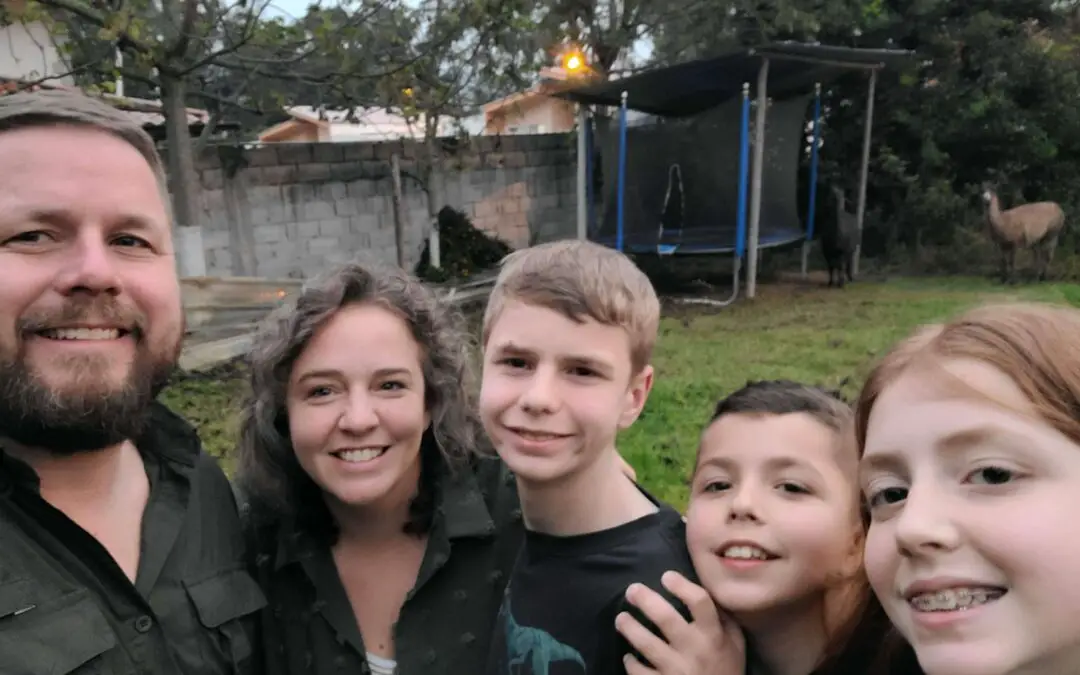Ecuador considers itself the most biodiverse in the world. According to Biodiversity Group, roughly 8% of amphibian species, 5% of reptile species, 8% of mammal species, and 16% of bird species in the world are found in this diminutive country, which comprises only 0.2% of the world’s land area. In a country very similar in area to the US state of Colorado, you can find oceanfront coasts and islands, volcanos, rain forest, and mountains. It’s really quite incredible.
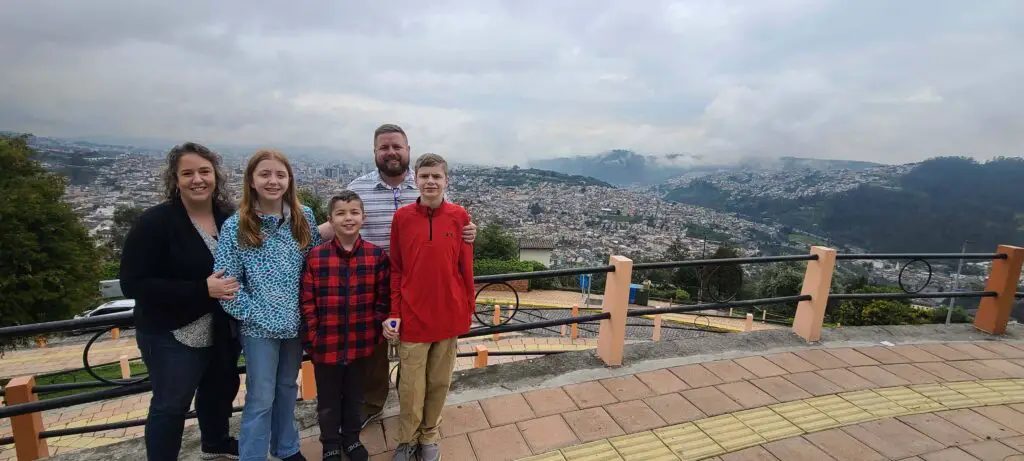 Equally incredible is how affordable such an adventure can be depending on your comfort level and level of support you choose. Our intention was to see much of the country so we decided the best option was to travel with a guide and driver. Because of this, we didn’t spend hours in the car not knowing what we were seeing. The entire experience was narrated by our guide, Tomas. Our driver, Oscar, expertly navigated washed out roads and high altitude winding roads which would certainly have made our experience very stressful on our own.
Equally incredible is how affordable such an adventure can be depending on your comfort level and level of support you choose. Our intention was to see much of the country so we decided the best option was to travel with a guide and driver. Because of this, we didn’t spend hours in the car not knowing what we were seeing. The entire experience was narrated by our guide, Tomas. Our driver, Oscar, expertly navigated washed out roads and high altitude winding roads which would certainly have made our experience very stressful on our own.
To make this incredible journey from the Midwest to Ecuador, let’s look at our adventure in several parts:
- Travel
- Quito
- Northern Ecuador
- Journey Toward Amazon
- Banos
- Volcanoes, Craters & Villages
- Why Hire a Guide and/or Driver
Travel
Because we liv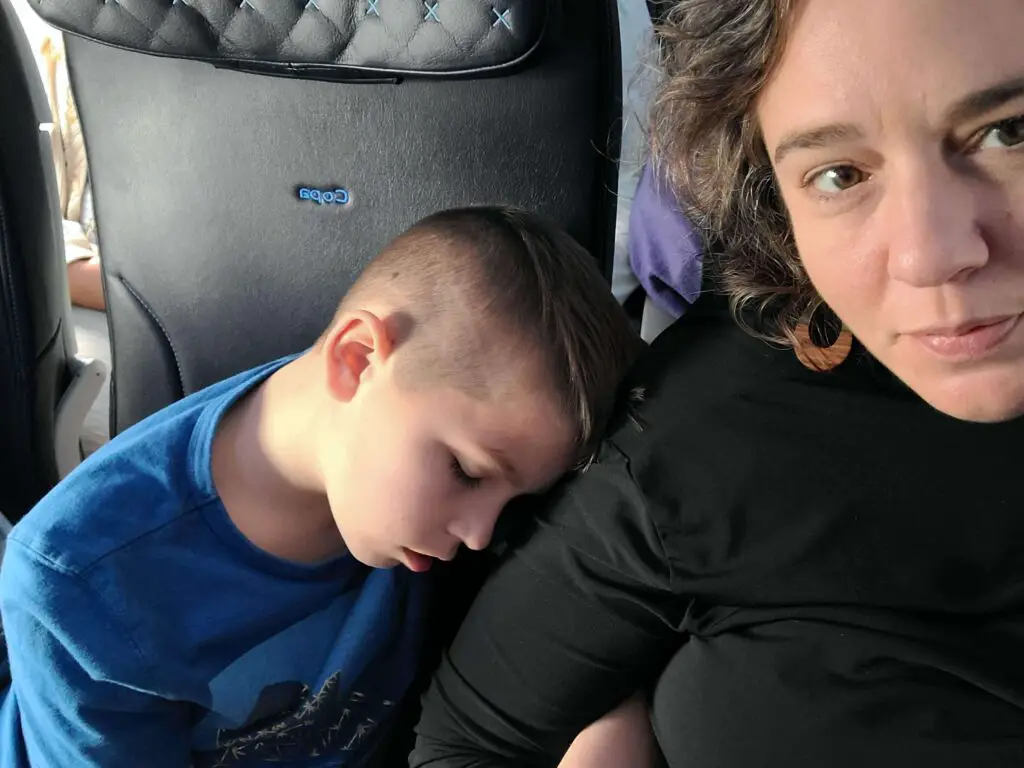 e three hours from a major airport and were working around the confines Spring Break schedule, we found that flying to Miami from Chicago Midway and separately booking flights from Miami to Quito worked best for efficiency and budget. The flight to Miami is called a “positioning flight” in the travel hacking world. We spent one night at an airport hotel in Miami before leaving very early in the morning. We flew Copa with a 4.5 hour layover in Panama City and arrived to Quito in the late afternoon.
e three hours from a major airport and were working around the confines Spring Break schedule, we found that flying to Miami from Chicago Midway and separately booking flights from Miami to Quito worked best for efficiency and budget. The flight to Miami is called a “positioning flight” in the travel hacking world. We spent one night at an airport hotel in Miami before leaving very early in the morning. We flew Copa with a 4.5 hour layover in Panama City and arrived to Quito in the late afternoon.
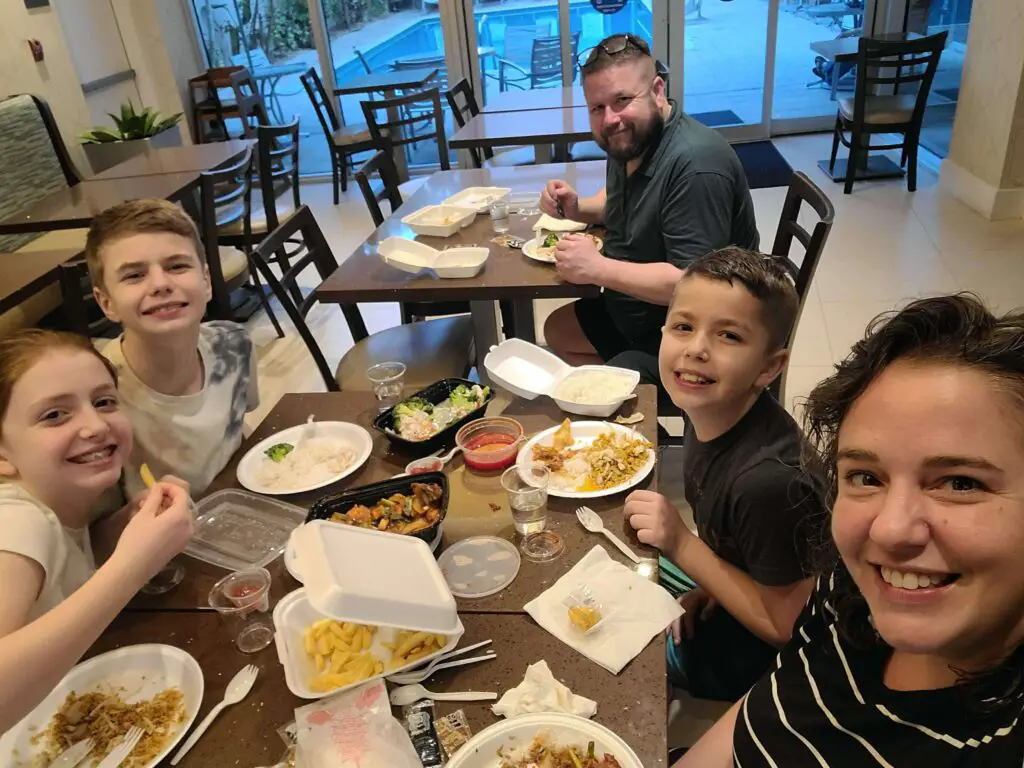 Anytime we travel outside of the U.S., I like to arrange a private shuttle. It’s usually cost-efficient with five people and bags. In this case, our guide, Tomas, was able to meet us and from the start our team was all together.
Anytime we travel outside of the U.S., I like to arrange a private shuttle. It’s usually cost-efficient with five people and bags. In this case, our guide, Tomas, was able to meet us and from the start our team was all together.
Quito
We settled into Hotel San Francisco de Quito, located in the historic district of Quito. Our room isn’t featured on the site. We had four beds in a uniquely shaped room with a bathroom en suite. The room itself was somewhat rustic, but served our purpose well as we wanted to be in this location for our limited time in Quito. There are more luxurious options, but we liked the price and option for all of us to be in one room.
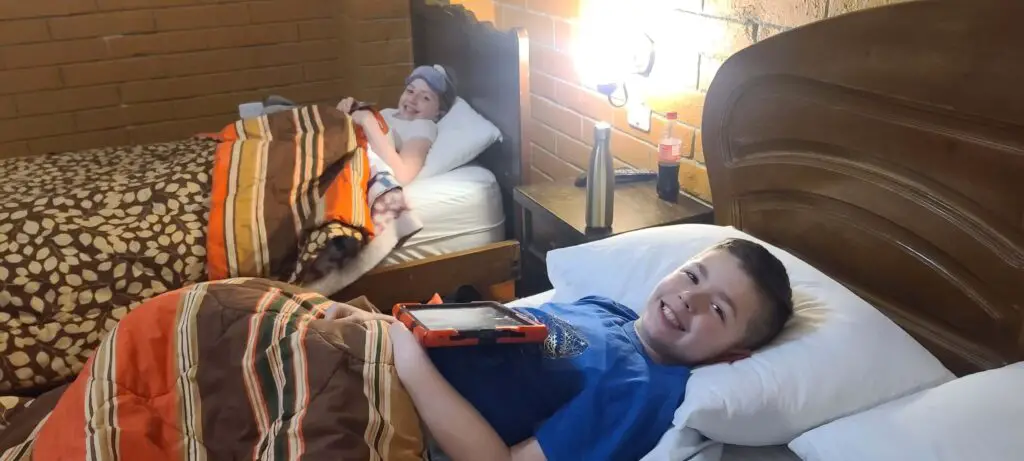 The hotel offers a daily breakfast in the basement level which was tasty including eggs, juice, toast, cereal, and coffee.
The hotel offers a daily breakfast in the basement level which was tasty including eggs, juice, toast, cereal, and coffee.
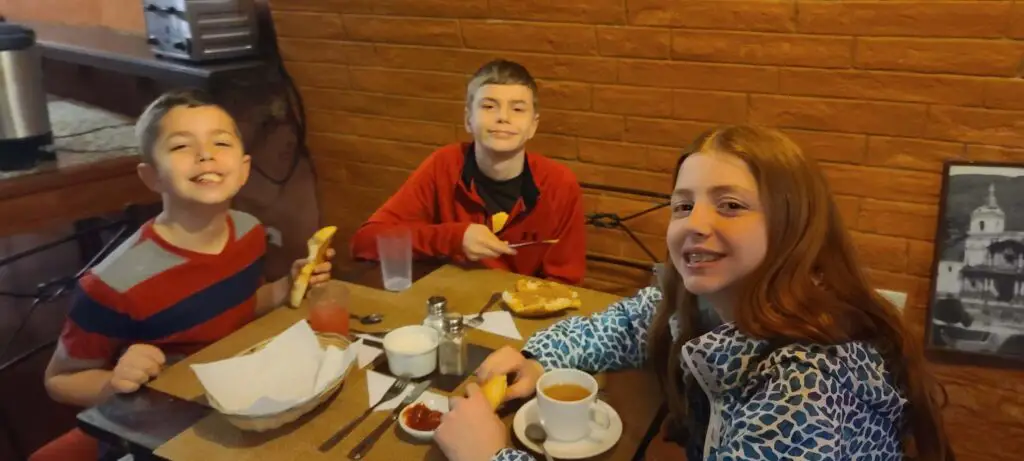 My favorite element of Hotel San Francisco de Quito is the lobby/common space. Throughout the hotel are hundreds of plants and they drape around the entire lobby with an atrium roof.
My favorite element of Hotel San Francisco de Quito is the lobby/common space. Throughout the hotel are hundreds of plants and they drape around the entire lobby with an atrium roof.
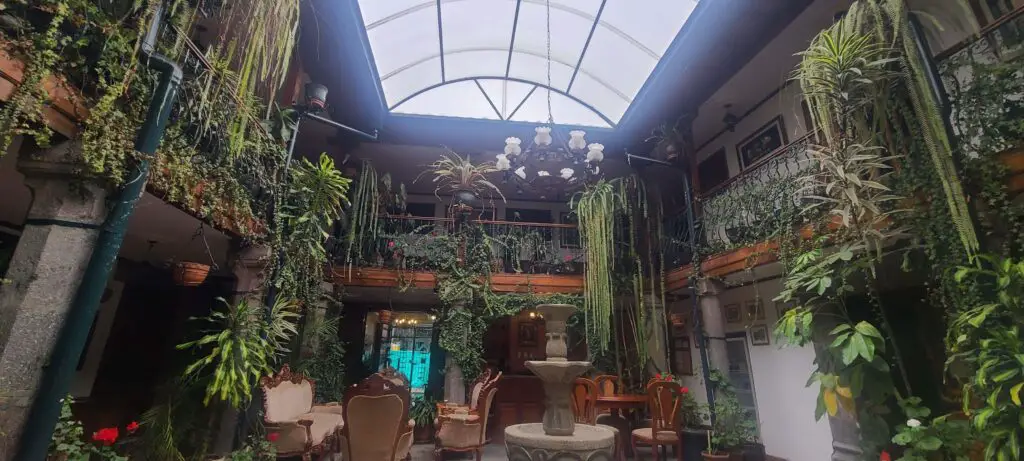 Our first night we walked around the corner to eat at San Ignacio, an Ecuadorian restaurant. This was our first encounter with Aji, a condiment we found on nearly every table in Ecuador and we enjoyed adding to soups and meats.
Our first night we walked around the corner to eat at San Ignacio, an Ecuadorian restaurant. This was our first encounter with Aji, a condiment we found on nearly every table in Ecuador and we enjoyed adding to soups and meats.
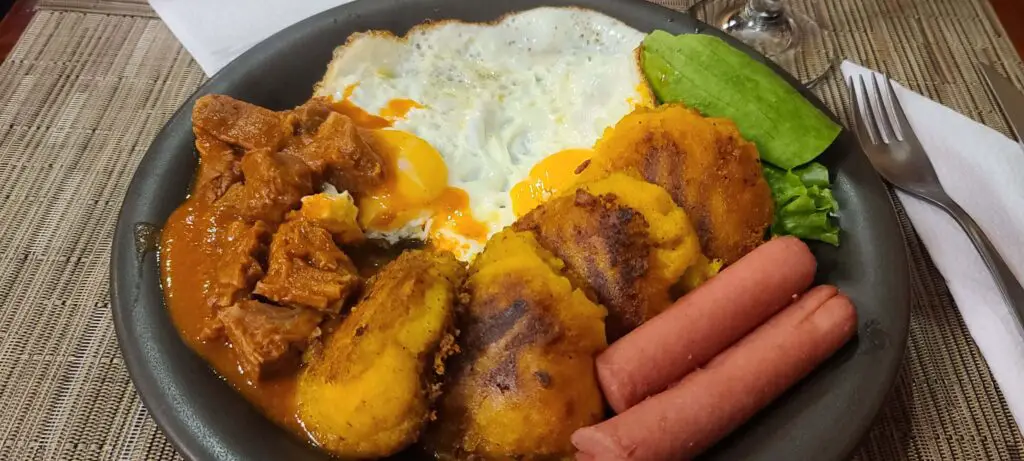 Our only full day in Quito was a chance to get a taste of everything. We started by driving to the huge angel statue called Virgen de Panecillo. The statue is visible from all of downtown Quito and is twelve feet taller than Rio’s Christ the Redeemer statue. In warmer weather and weekends, there are stall selling goods at this location. It was perfect spot to learn around the surrounding areas and get a panoramic view of Quito.
Our only full day in Quito was a chance to get a taste of everything. We started by driving to the huge angel statue called Virgen de Panecillo. The statue is visible from all of downtown Quito and is twelve feet taller than Rio’s Christ the Redeemer statue. In warmer weather and weekends, there are stall selling goods at this location. It was perfect spot to learn around the surrounding areas and get a panoramic view of Quito.
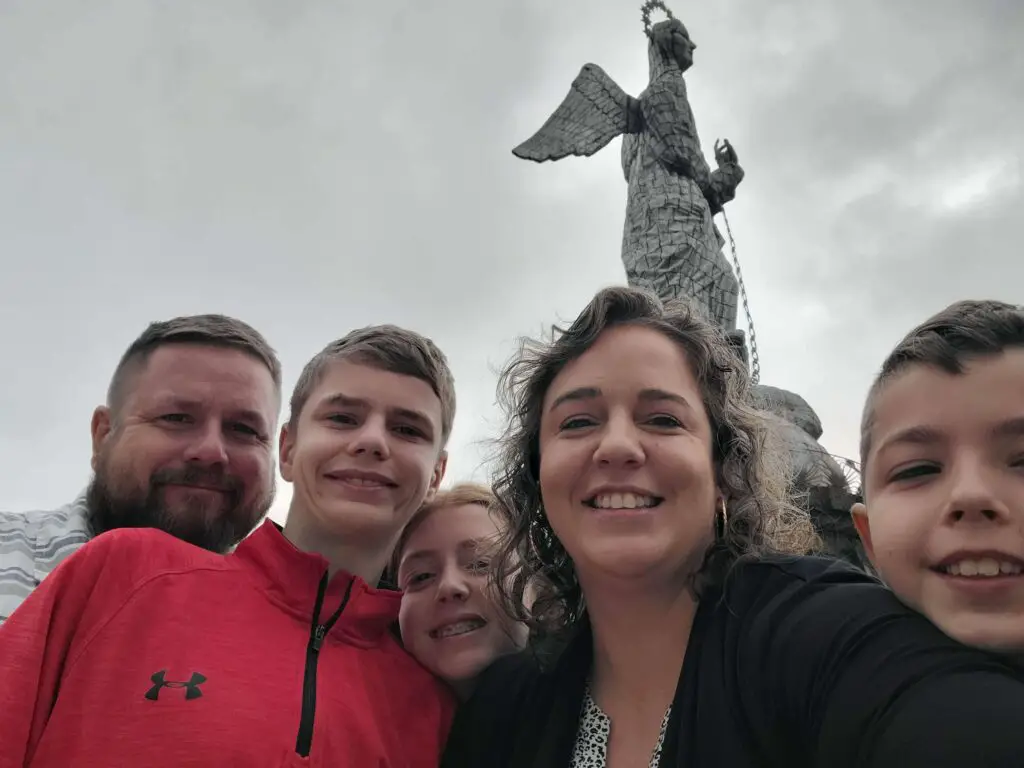 This is where it began to be apparent that there are dogs nearly everywhere you go in Ecuador. We had seen a few somewhat aggressive dogs in Old Town who were just looking for food. The ones we encountered at the statue were docile, but presumably also scrounging for food. This theme continued through small towns and the countryside. I couldn’t keep the kids away from them; lots of sanitizer was used.
This is where it began to be apparent that there are dogs nearly everywhere you go in Ecuador. We had seen a few somewhat aggressive dogs in Old Town who were just looking for food. The ones we encountered at the statue were docile, but presumably also scrounging for food. This theme continued through small towns and the countryside. I couldn’t keep the kids away from them; lots of sanitizer was used.
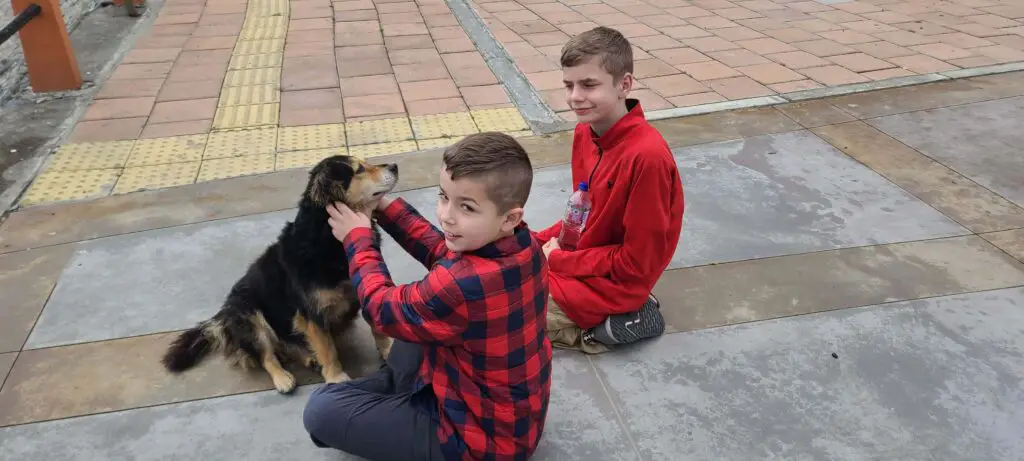 About twenty minutes from Quito is a location that the Incas determined long ago to be the “middle of the world”. There is a museum call Mitad del Mundo that will come up first in your search, but we actually visited the Intinan Museum. They offer guided tours in English. There is a focus on history and also on the uniqueness of gravity at this point on the Earth. It was a fun and interesting tour.
About twenty minutes from Quito is a location that the Incas determined long ago to be the “middle of the world”. There is a museum call Mitad del Mundo that will come up first in your search, but we actually visited the Intinan Museum. They offer guided tours in English. There is a focus on history and also on the uniqueness of gravity at this point on the Earth. It was a fun and interesting tour.
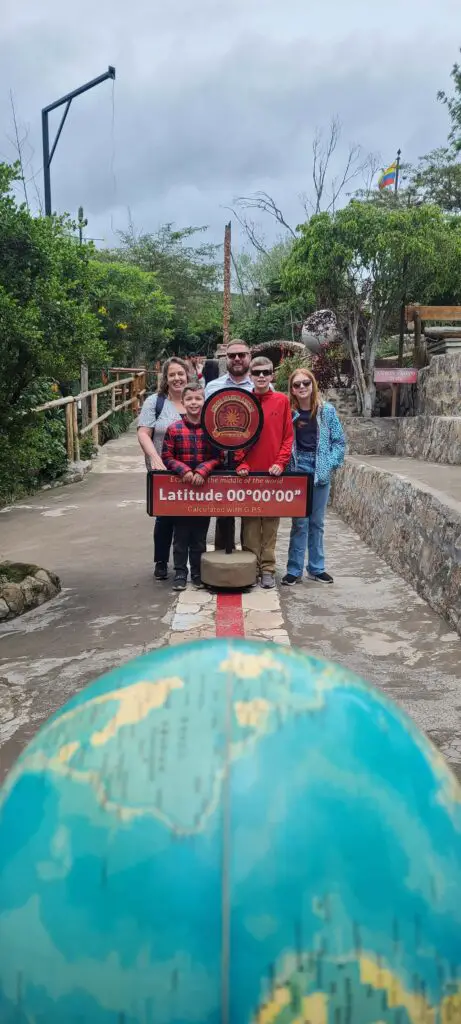 For lunch we stopped just off the roadway at Empanadas Chilenas por Weidman & Franco. We tried a variety of fillings, all were delicious. The kids enjoyed trying the Inca Kola and learned a toast.
For lunch we stopped just off the roadway at Empanadas Chilenas por Weidman & Franco. We tried a variety of fillings, all were delicious. The kids enjoyed trying the Inca Kola and learned a toast.
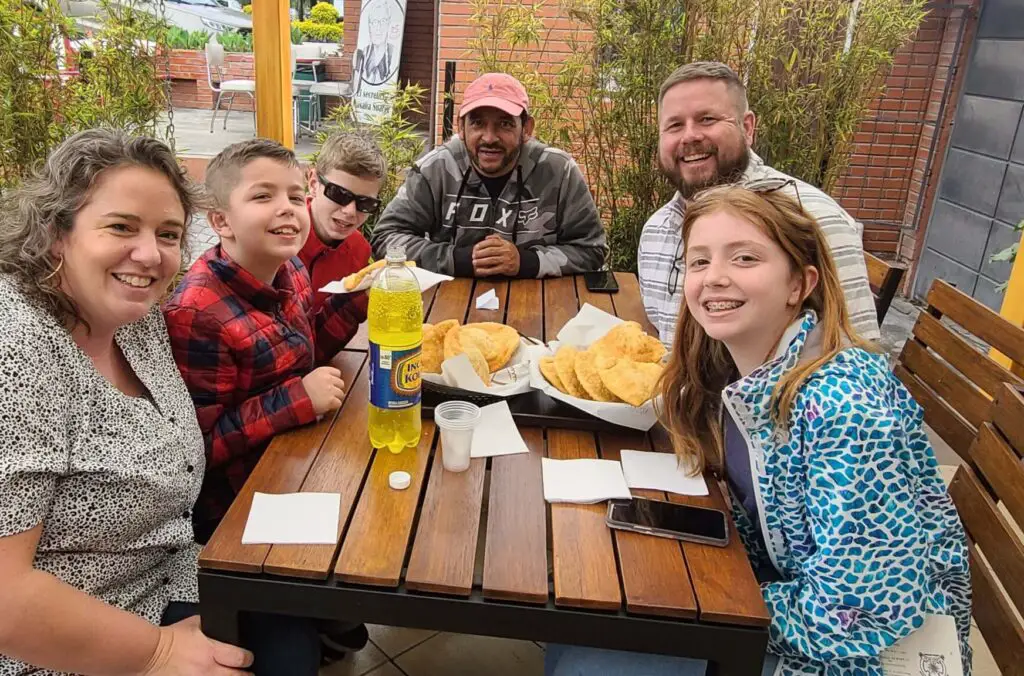 We returned to downtown Quito and began visiting several significant sites including Basicila del Voto Nacional. The architecture of this church which took 100 years to build is stunning.
We returned to downtown Quito and began visiting several significant sites including Basicila del Voto Nacional. The architecture of this church which took 100 years to build is stunning.
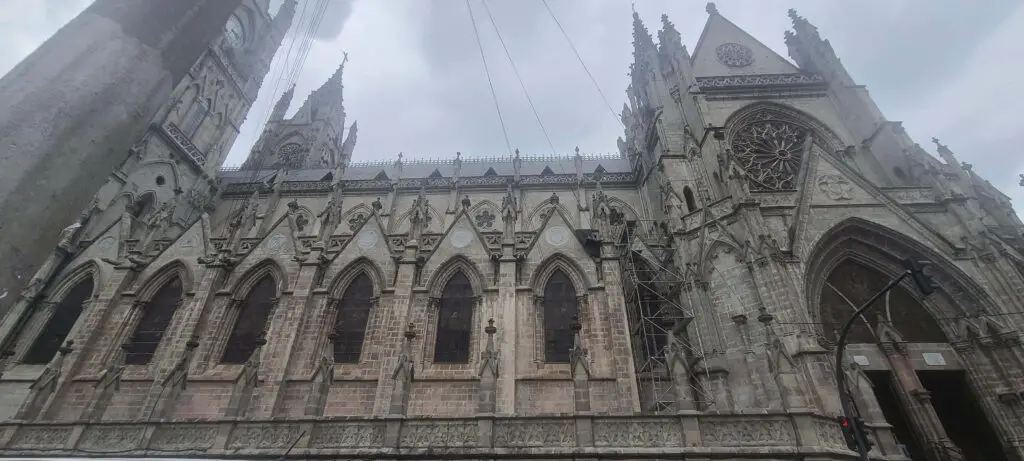 The views of Quito from the upper level are impressive on a clear day.
The views of Quito from the upper level are impressive on a clear day.
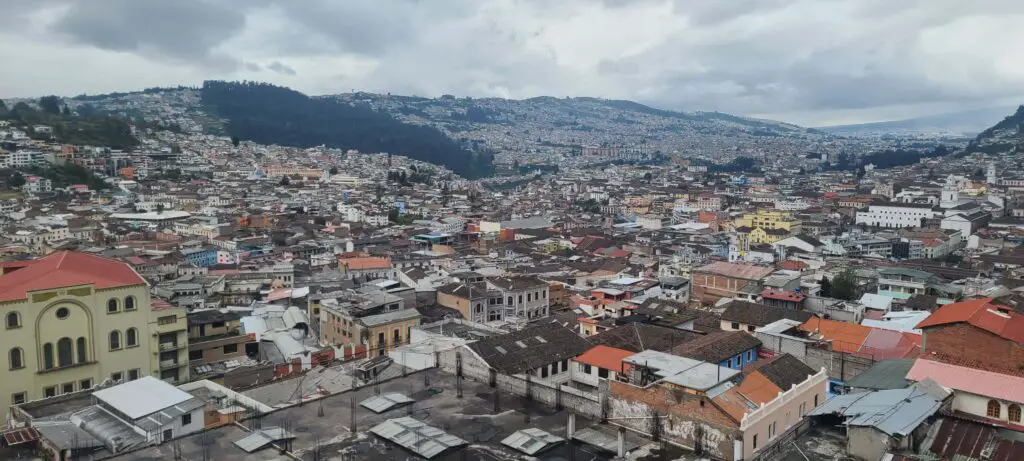 The most unique thing about this church is the walkway which feels surreal as you walk toward the upper level lookout. This blog offers great detail about a visit to the Basilica.
The most unique thing about this church is the walkway which feels surreal as you walk toward the upper level lookout. This blog offers great detail about a visit to the Basilica.
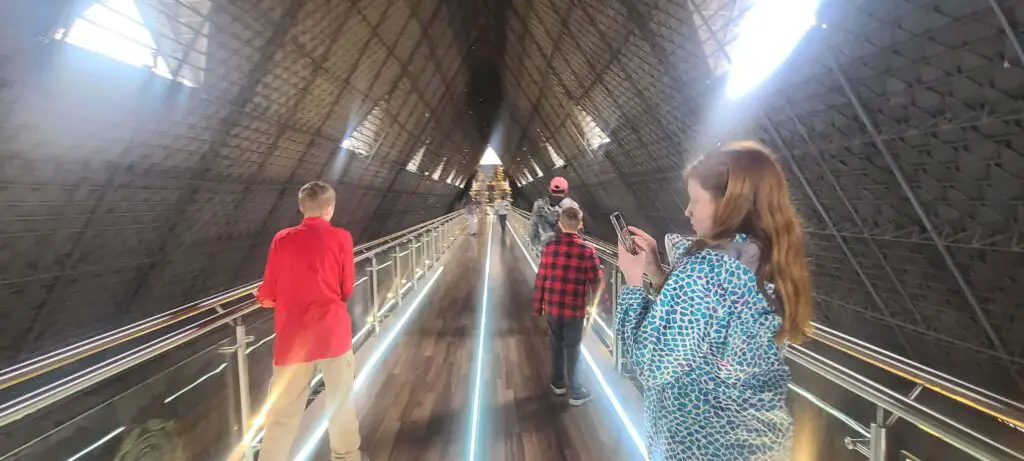
Having a knowledgeable guide meant we saw La Plaza Grande not just from the ground, but also from a couple of stories up as we were permitted to view it from the ballroom of a hotel on the plaza. This plaza is surrounded by significant buildings (including the President’s Palace), monuments, and hundreds of years of history.
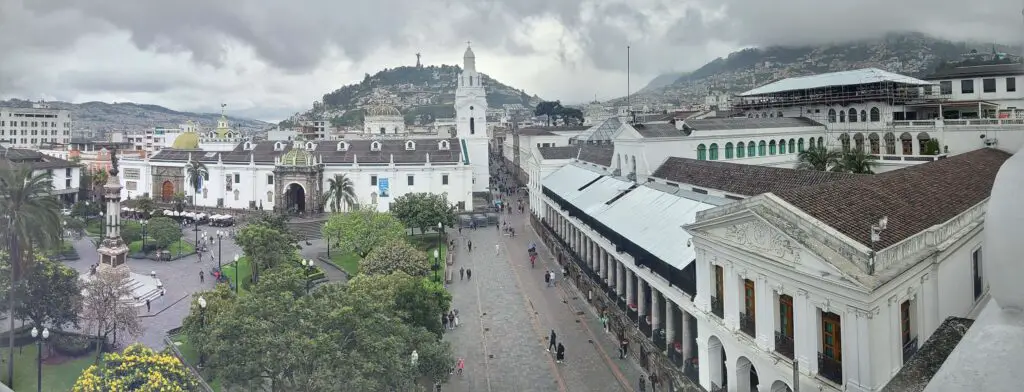 We toured more significant churches, visited important streets, and learned a great deal about Quito and Ecuador’s history, much of this in the rain. It didn’t dampen our spirits.
We toured more significant churches, visited important streets, and learned a great deal about Quito and Ecuador’s history, much of this in the rain. It didn’t dampen our spirits.
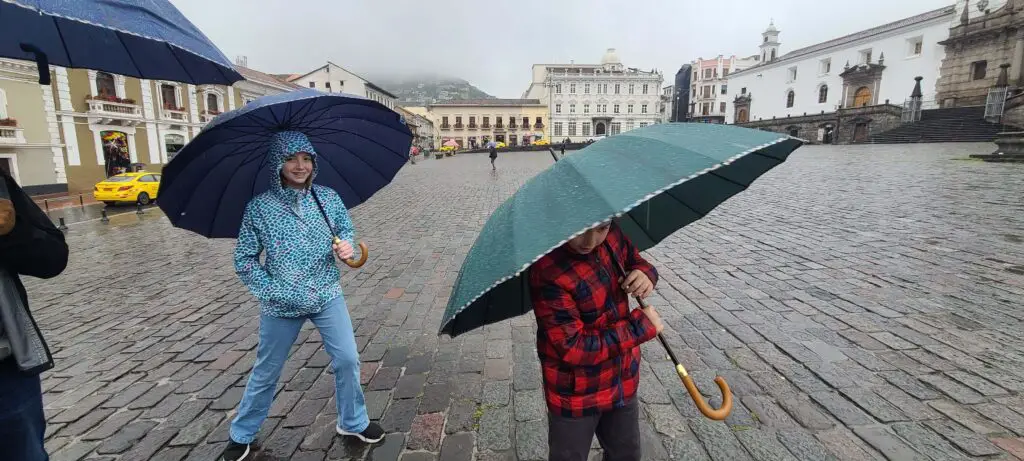 After we wrapped up our tour for the day, we visited a historic building that used to be the Archbishop’s Palace but has now been converted to include restaurants and shops. We ate dinner at Cafe del Fraile. It was easy for us to enjoy Ecuadorian cuisine, but also get spaghetti with meat sauce for two of the kids to share.
After we wrapped up our tour for the day, we visited a historic building that used to be the Archbishop’s Palace but has now been converted to include restaurants and shops. We ate dinner at Cafe del Fraile. It was easy for us to enjoy Ecuadorian cuisine, but also get spaghetti with meat sauce for two of the kids to share.
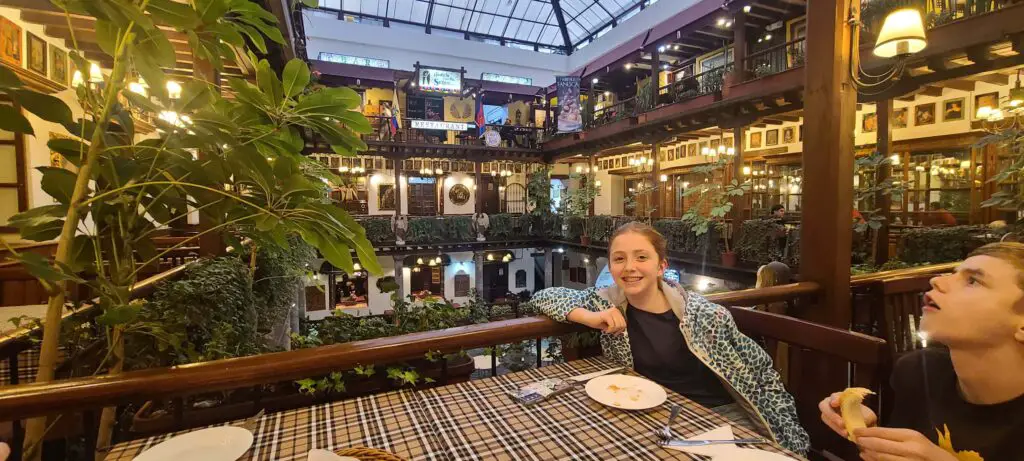 The building, like our hotel on a grander scale, has open balconies inside that make for great ambiance for restaurants.
The building, like our hotel on a grander scale, has open balconies inside that make for great ambiance for restaurants.
Northern Ecuador
Although Quito is already located in the Northern part of the country, there are several beautiful places to see further North. Elevations remain nearly as high as they are in Quito. We left the next morning after enjoying another hotel breakfast.
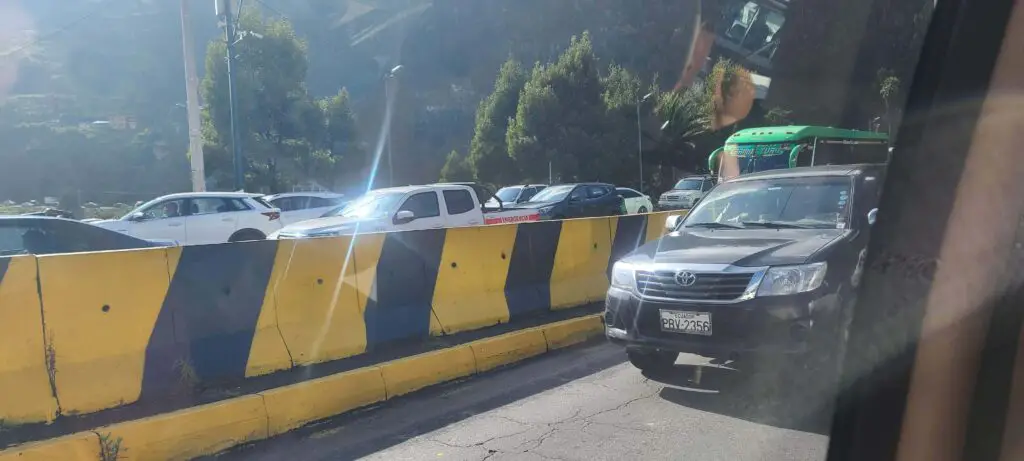 We saw first hand how wild the traffic coming into Quito is each morning. I wrote more about this here. The morning’s drive took us past beautiful viewpoints and a stop for bizcochos. These little flaky, buttery biscuits were served with cheese and yogurt. The hands-on process of producing them and coal fire ovens were impressive to see.
We saw first hand how wild the traffic coming into Quito is each morning. I wrote more about this here. The morning’s drive took us past beautiful viewpoints and a stop for bizcochos. These little flaky, buttery biscuits were served with cheese and yogurt. The hands-on process of producing them and coal fire ovens were impressive to see.
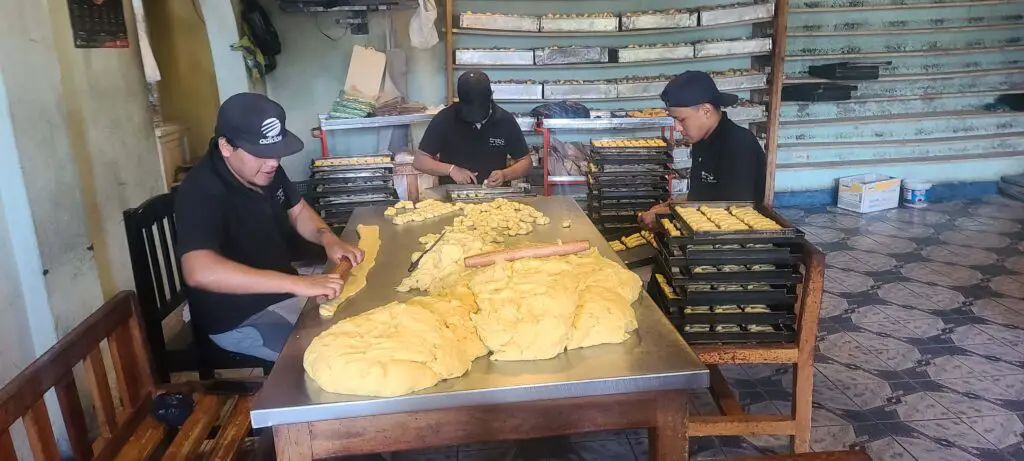 Approximately 1.5 hours outside of Quito, we arrived to Lago San Pablo. We knew we would be kayaking, but had no idea how serene and peaceful the water would be.
Approximately 1.5 hours outside of Quito, we arrived to Lago San Pablo. We knew we would be kayaking, but had no idea how serene and peaceful the water would be.
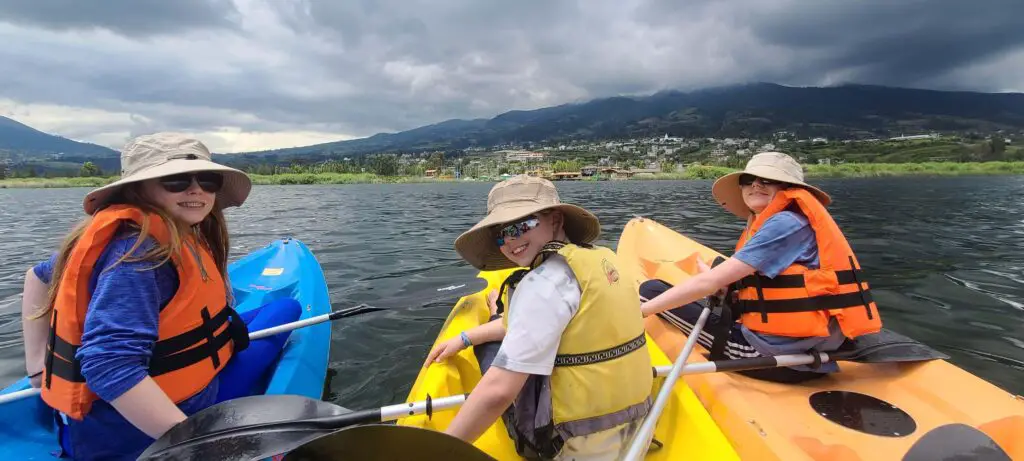 There wasn’t another boat on the water and the lake offers views of a beautiful nearby volcano.
There wasn’t another boat on the water and the lake offers views of a beautiful nearby volcano.
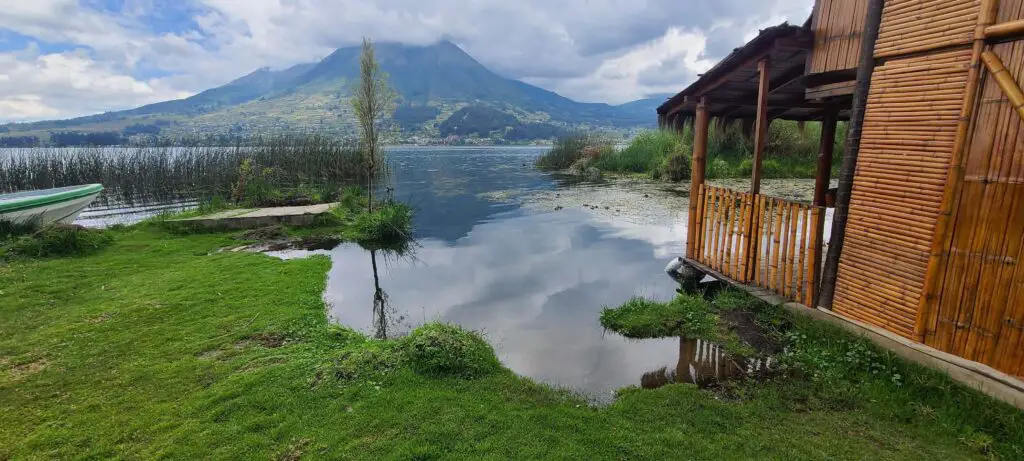 After pulling our kayaks (brought down by a local contact of our guide) and drying off, we headed toward lunch. We eat at Rincon Otavalo. My best comparison is a quick service sit down restaurant. They have their entire menu on the wall and feature many Ecuadorian specialties. I loved the plantains served with cheese. We tried a version of the fermented drink, Chica. Our youngest was amused to see how unique the “corn on the cob” looked.
After pulling our kayaks (brought down by a local contact of our guide) and drying off, we headed toward lunch. We eat at Rincon Otavalo. My best comparison is a quick service sit down restaurant. They have their entire menu on the wall and feature many Ecuadorian specialties. I loved the plantains served with cheese. We tried a version of the fermented drink, Chica. Our youngest was amused to see how unique the “corn on the cob” looked.
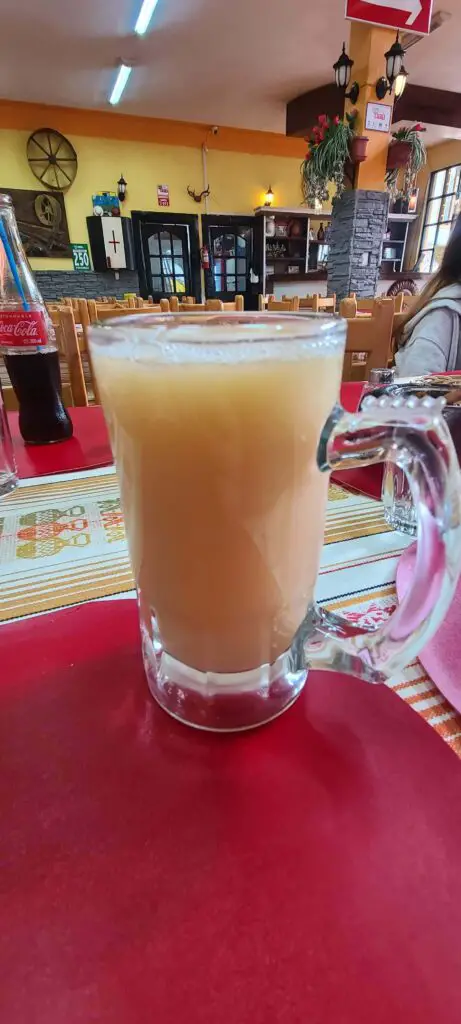 As we came in and out of communities, we were pleased to see cows moving freely in a couple places. We visited the home of one family that offers a presentation and shop featuring a variety of traditional musical instruments.
As we came in and out of communities, we were pleased to see cows moving freely in a couple places. We visited the home of one family that offers a presentation and shop featuring a variety of traditional musical instruments.
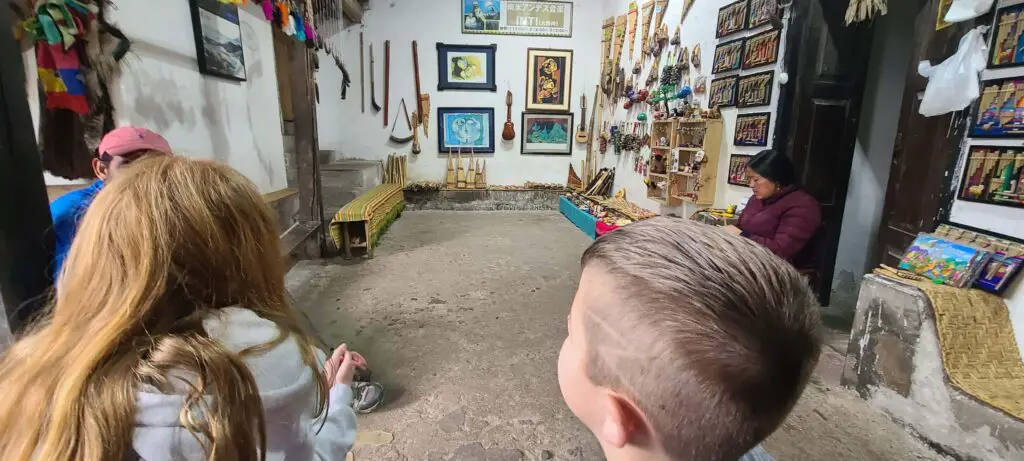 We also enjoyed a demonstration of traditional textile making in another shop basement which featured a wide variety of traditional and stylish clothing and home goods.
We also enjoyed a demonstration of traditional textile making in another shop basement which featured a wide variety of traditional and stylish clothing and home goods.
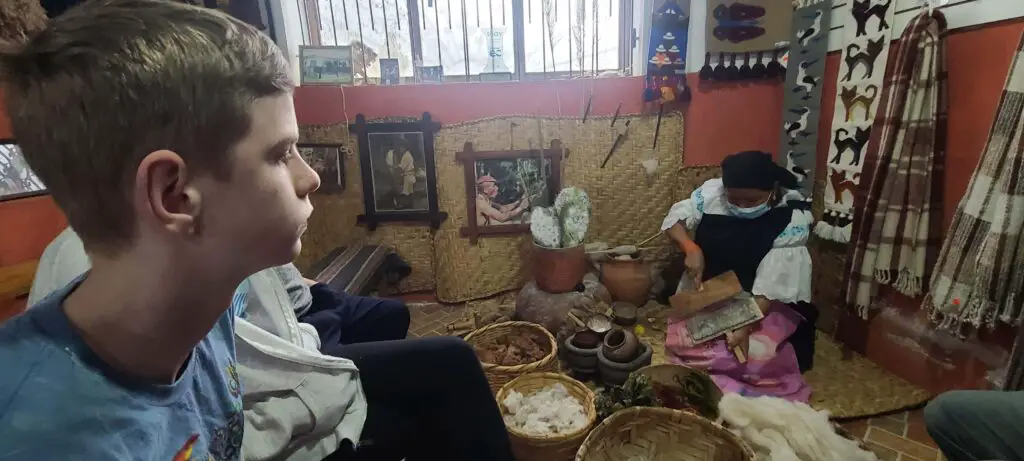 And our final stop of our journey on our way to our lodging was a waterfall hidden away off a short hike. Ecuador is full of surprises.
And our final stop of our journey on our way to our lodging was a waterfall hidden away off a short hike. Ecuador is full of surprises.
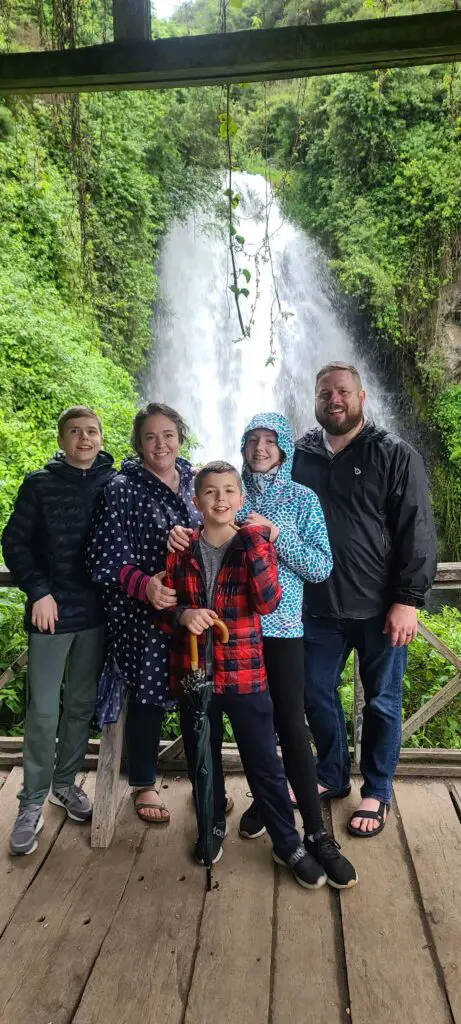 Our resting point for the evening was Yellow Guest House. This property is owned by our guide and you can see the wonderful guest experience from the reviews.
Our resting point for the evening was Yellow Guest House. This property is owned by our guide and you can see the wonderful guest experience from the reviews.
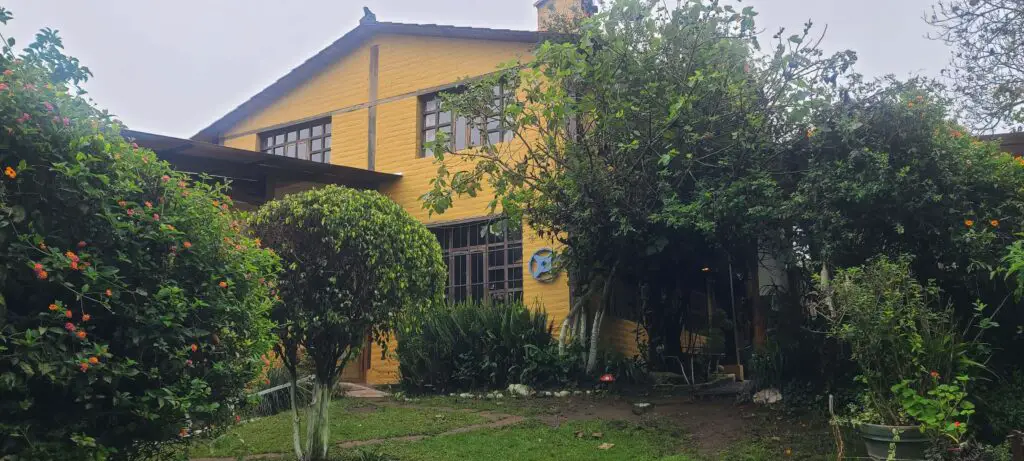 We took two rooms for our family, but also enjoyed the common spaces inside and out, visited the alpacas, and enjoyed delicious meals! The best way to get in touch with Tomas, the proprietor, are phone (+593999665959) and Instagram.
We took two rooms for our family, but also enjoyed the common spaces inside and out, visited the alpacas, and enjoyed delicious meals! The best way to get in touch with Tomas, the proprietor, are phone (+593999665959) and Instagram.
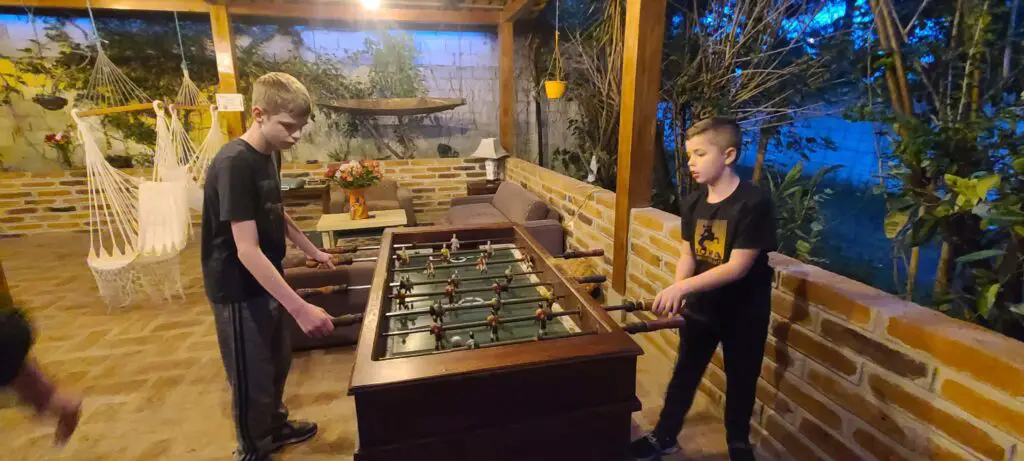 Our first full day in Northern Ecuador involved visiting a local animal market. It appeared we were the only non-Ecuadorians in attendance. With the guidance of our guide, we felt confident in navigating the environment to enjoy and not offend the vendors.
Our first full day in Northern Ecuador involved visiting a local animal market. It appeared we were the only non-Ecuadorians in attendance. With the guidance of our guide, we felt confident in navigating the environment to enjoy and not offend the vendors.
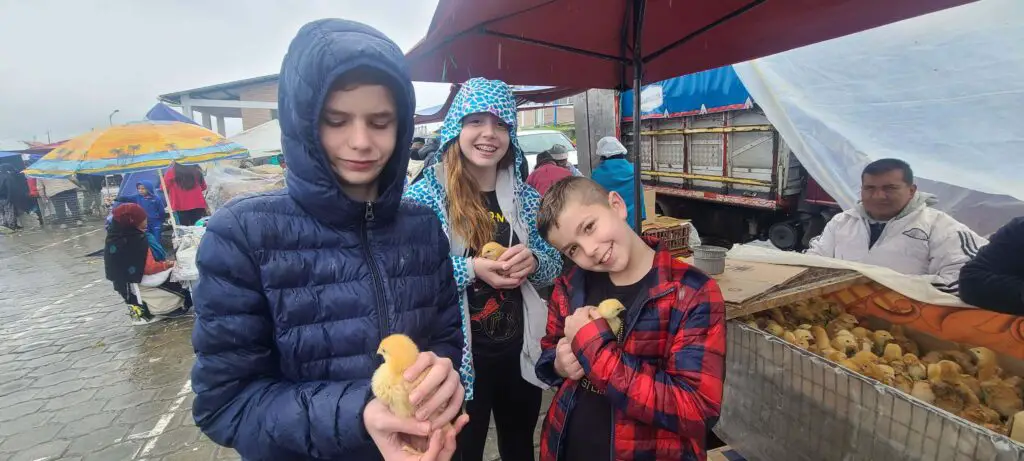 Most animals are being purchased to raise, butcher or prepare for consumption. It is a part of daily life we may not be confronted with, but good to understand the process for others. Guinea Pig is a common dish in Ecuador so we found lots of them available at the market.
Most animals are being purchased to raise, butcher or prepare for consumption. It is a part of daily life we may not be confronted with, but good to understand the process for others. Guinea Pig is a common dish in Ecuador so we found lots of them available at the market.
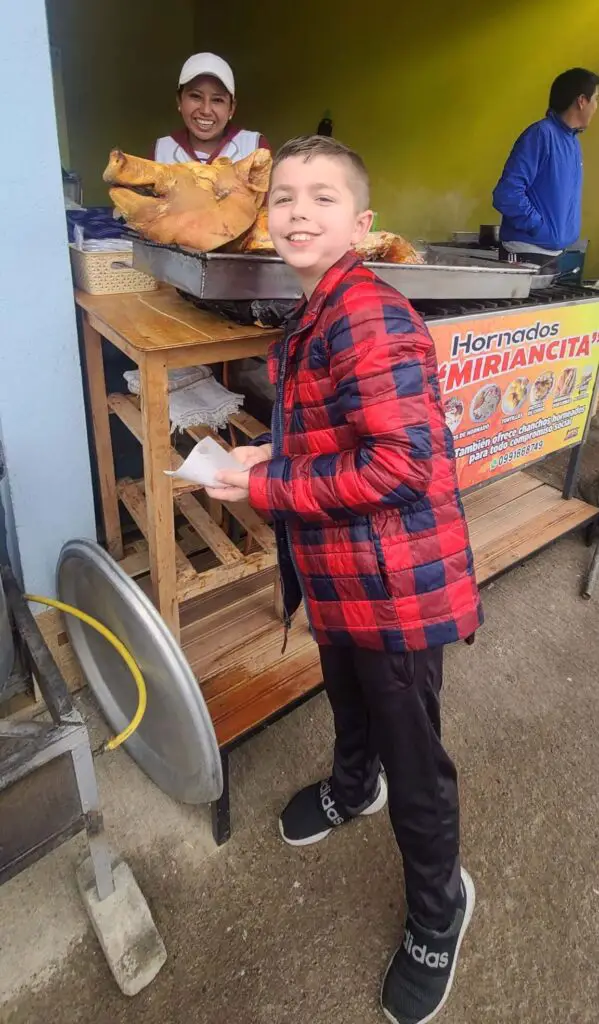 There were also food vendors bordering the market. Although we didn’t eat a meal, one of our sons was offered a taste of pork.
There were also food vendors bordering the market. Although we didn’t eat a meal, one of our sons was offered a taste of pork.
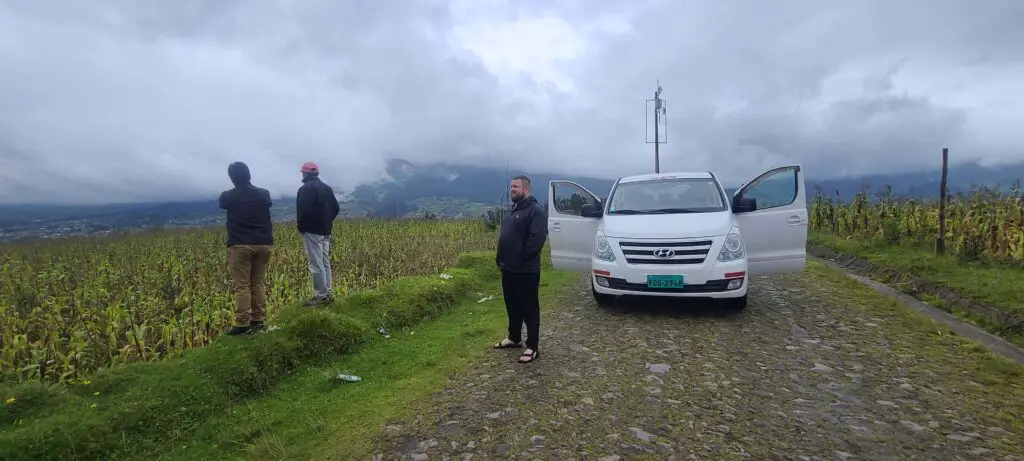 Moving from place to place in Ecuador, even within a small region, means lots of green, a variety of plants, and sometimes beautiful views, of volcanoes.
Moving from place to place in Ecuador, even within a small region, means lots of green, a variety of plants, and sometimes beautiful views, of volcanoes.
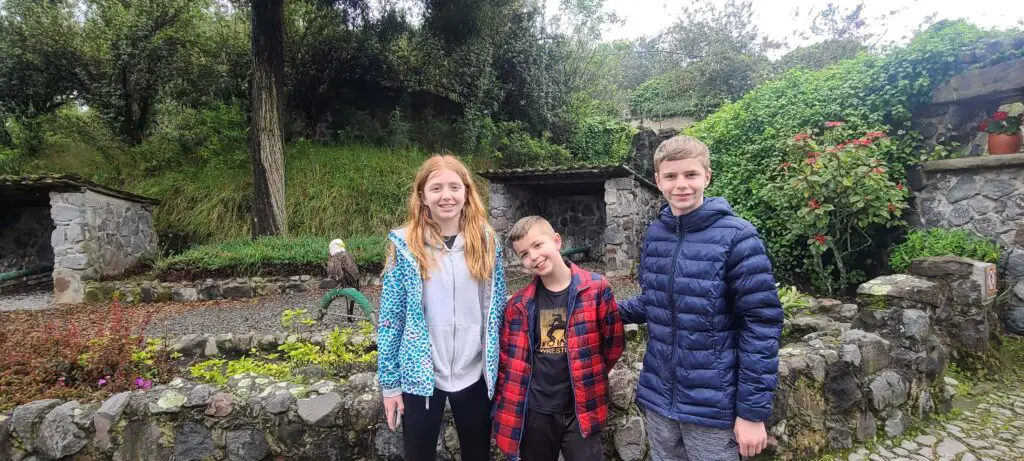 We next visited the Condor Park in Otavalo. If your family is interested in animals in general, but especially magnificent birds, this is a fun stop.
We next visited the Condor Park in Otavalo. If your family is interested in animals in general, but especially magnificent birds, this is a fun stop.
We visited on a rainy day and nearly had the place to ourselves.
Our next destination was Otavalo Market, a well known market due to its status as the largest market in South America. The town square is dense with hundreds of booths and tents. A wide variety of goods are sold here and on the side streets moving away from the market.
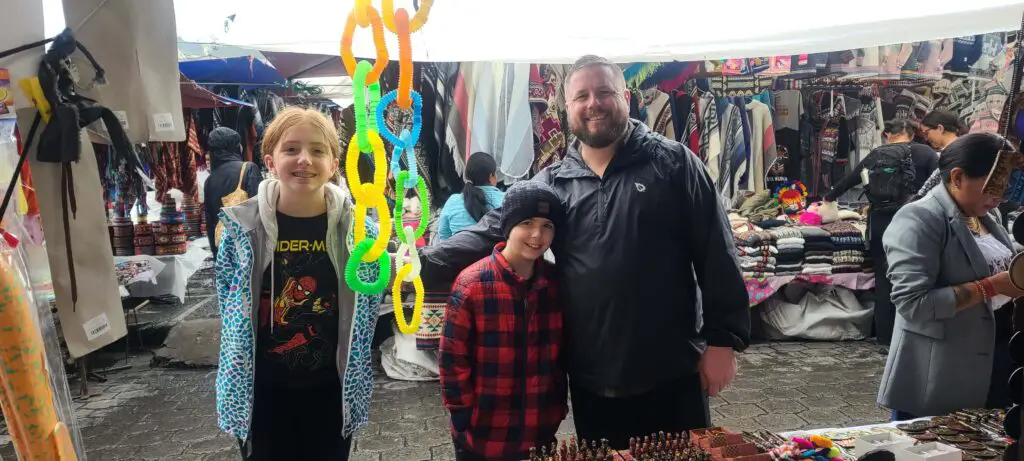 If you are looking for a conqueror and native chess set, here is your spot. Or maybe a “Nike” stocking hat for cold, rainy kids. And every type of souvenir including hoodies to jewelry to blankets is available here. We spent a couple hours shopping and browsing.
If you are looking for a conqueror and native chess set, here is your spot. Or maybe a “Nike” stocking hat for cold, rainy kids. And every type of souvenir including hoodies to jewelry to blankets is available here. We spent a couple hours shopping and browsing.
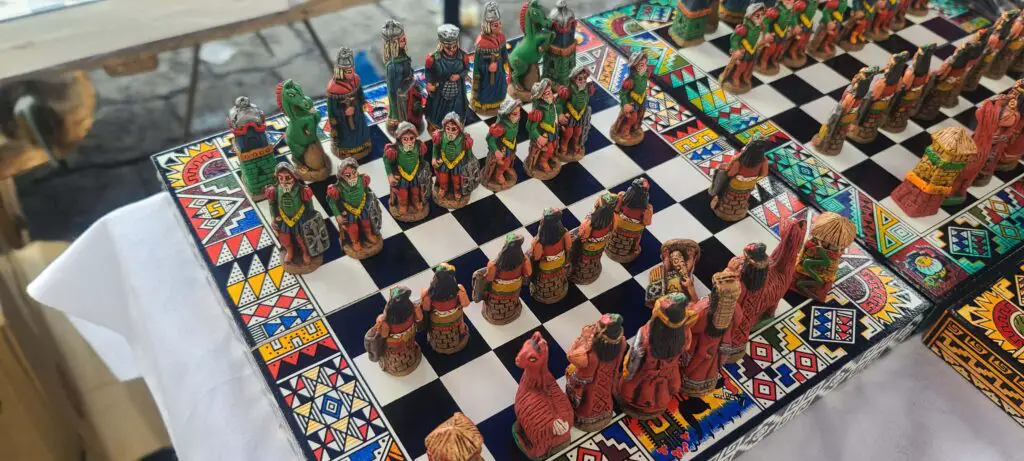 For lunch, we chose Inty Huasi, a restaurant on the border of the market featuring Ecuadorian and International options.
For lunch, we chose Inty Huasi, a restaurant on the border of the market featuring Ecuadorian and International options.
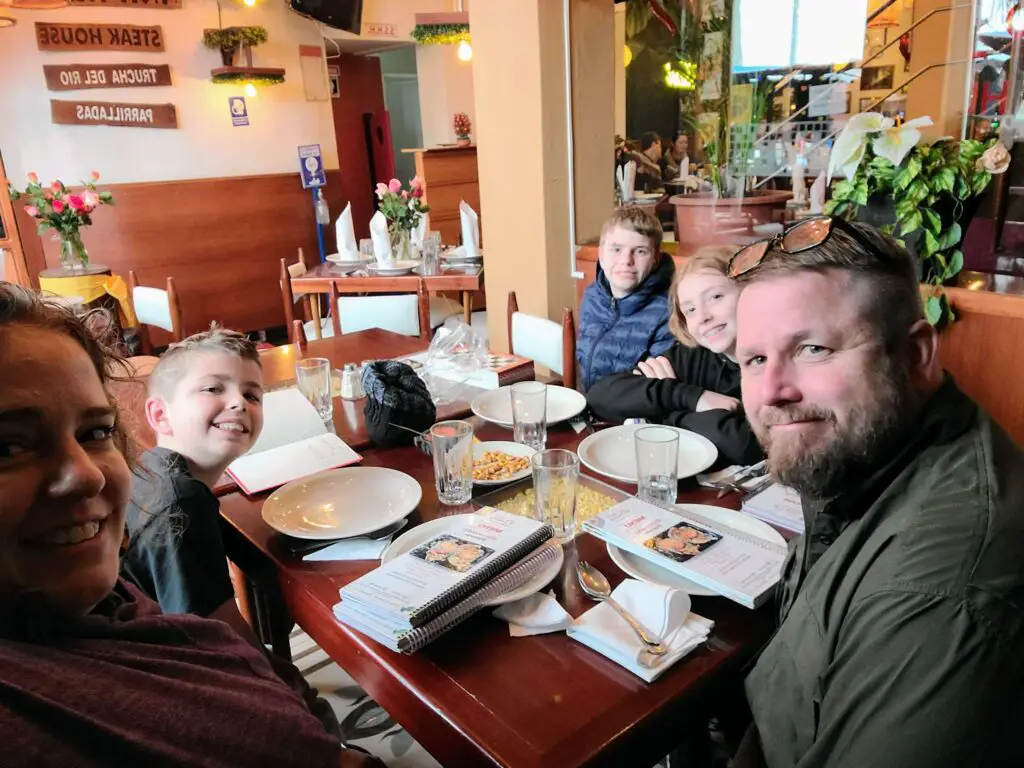 After we rejoined our guide, we headed for Laguna Cuicocha, an extinct volcano that now features a beautiful lake and lava islands. We visited on an overcast day so did not spend much more time outside than to get the view. There are trails around the lake to enjoy various viewpoints.
After we rejoined our guide, we headed for Laguna Cuicocha, an extinct volcano that now features a beautiful lake and lava islands. We visited on an overcast day so did not spend much more time outside than to get the view. There are trails around the lake to enjoy various viewpoints.
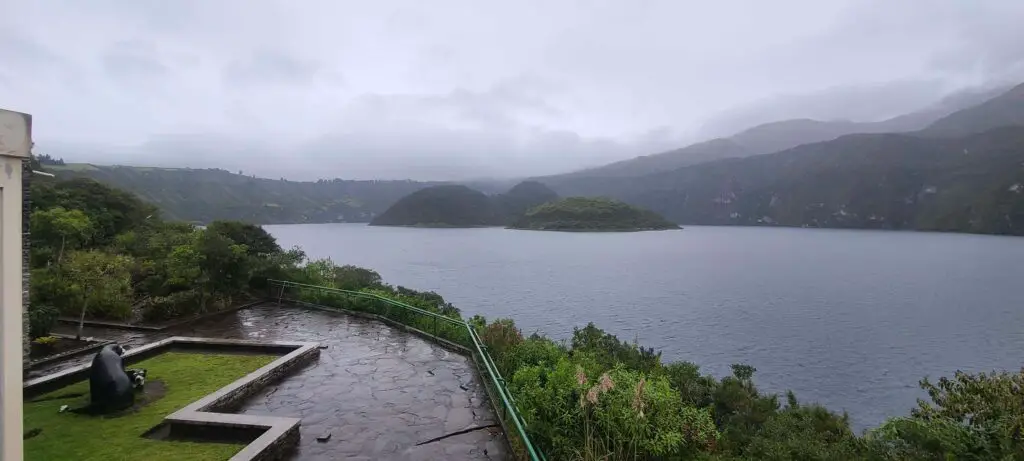 One final night enjoying the Yellow House and our time in this region of Ecuador came to an end. The staff at The Yellow House and their little helper will be dear to our hearts.
One final night enjoying the Yellow House and our time in this region of Ecuador came to an end. The staff at The Yellow House and their little helper will be dear to our hearts.
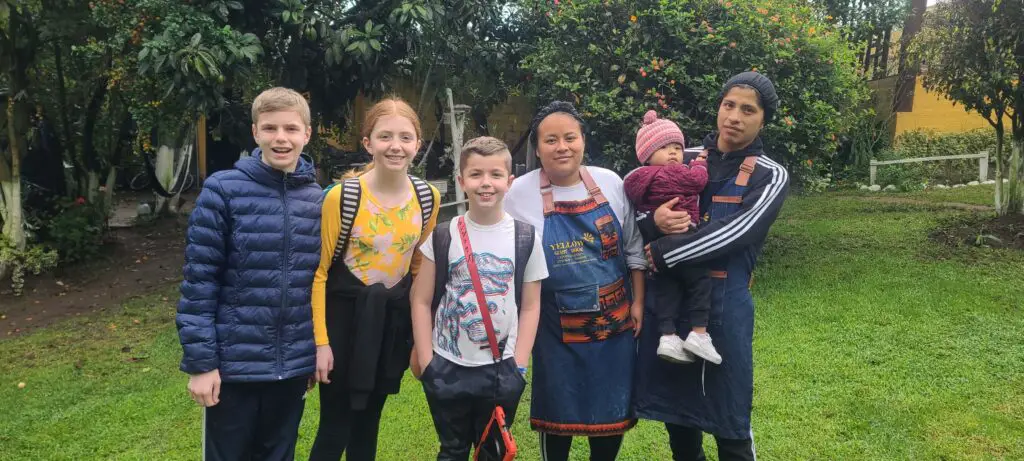
Journey Toward Amazon
The morning drive took us to Termas Papallacta, a gorgeous hot springs featuring a variety of different tubs and pools of differing temperatures. There are jets installed in some pools. They hold activities such as water exercise as well. 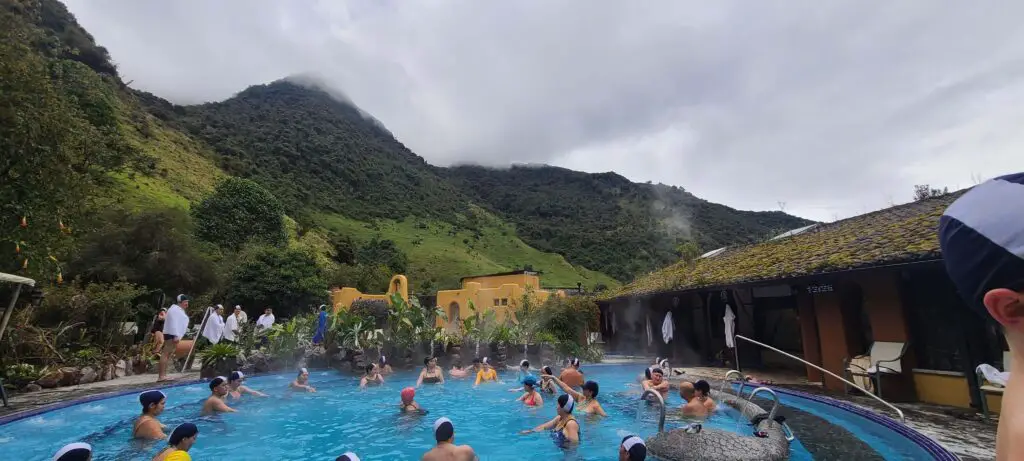
We enjoyed cold plunging here as well with the kids, some braver than the others. We cleaned up and finished with a light, tasty lunch on site. Everyone was refreshed and ready for another drive.
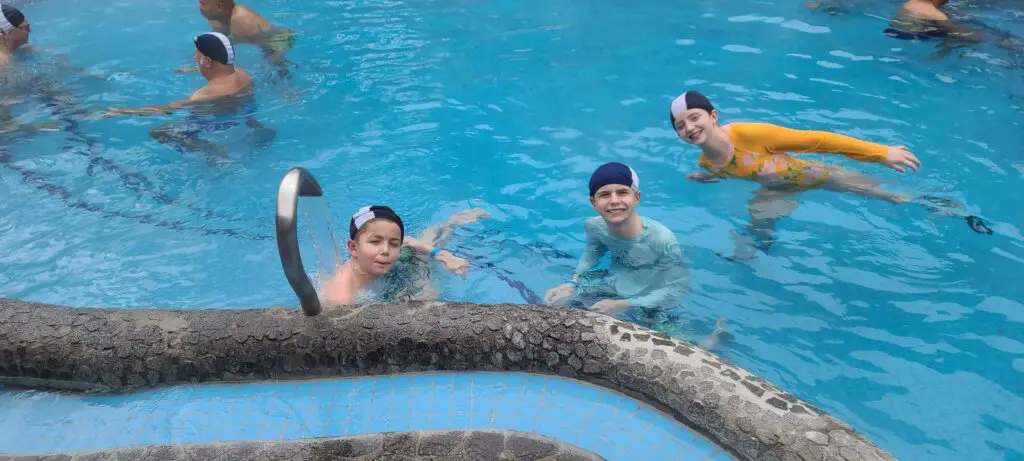 This drive was to Huasquila Amazon Lodge, located on the Western border of the area we refer to as the Amazon Rainforest. There are lodges much deeper into the rainforest available by short plane ride in other parts of Ecuador as well, but we felt it was going to take too much of our time traveling and require greater cost and potential vaccinations.
This drive was to Huasquila Amazon Lodge, located on the Western border of the area we refer to as the Amazon Rainforest. There are lodges much deeper into the rainforest available by short plane ride in other parts of Ecuador as well, but we felt it was going to take too much of our time traveling and require greater cost and potential vaccinations.
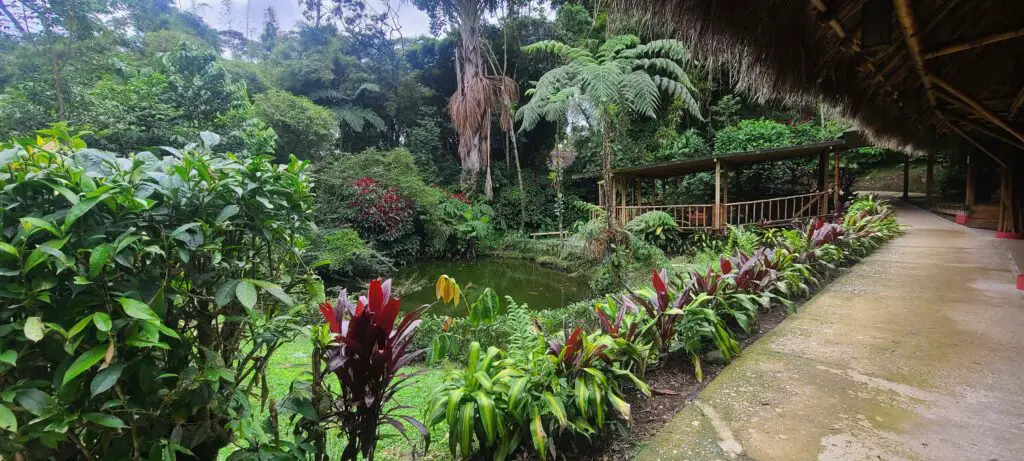 Huasquila was just immersed in nature enough for us. We stayed in a cabin with our other bathroom and electricity to charge our devices. We enjoyed wifi in the common area. The food which was served buffet or family style at different times was very good. They were accommodating to our requests and the children’s needs. Huasquila was the perfect launching point for our adventures of this region.
Huasquila was just immersed in nature enough for us. We stayed in a cabin with our other bathroom and electricity to charge our devices. We enjoyed wifi in the common area. The food which was served buffet or family style at different times was very good. They were accommodating to our requests and the children’s needs. Huasquila was the perfect launching point for our adventures of this region.
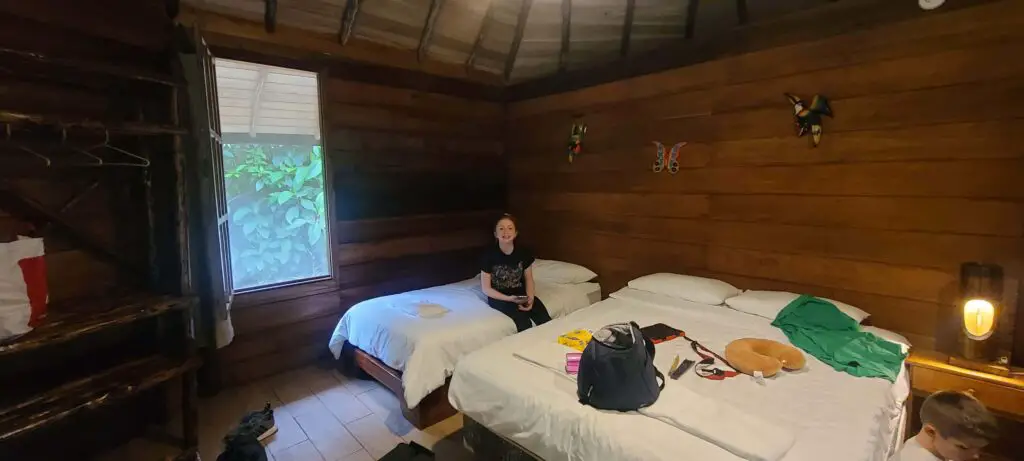 After settling at our lodge, we drove just up the road to visit a family of Quichua (an Indigenous people) who offered a bit of their cultural background, medicines, stories, jewelry and goods, dance and more to us in both a ceremonial and relaxed manner. We met in a long building that is a type of community space for the community.
After settling at our lodge, we drove just up the road to visit a family of Quichua (an Indigenous people) who offered a bit of their cultural background, medicines, stories, jewelry and goods, dance and more to us in both a ceremonial and relaxed manner. We met in a long building that is a type of community space for the community.
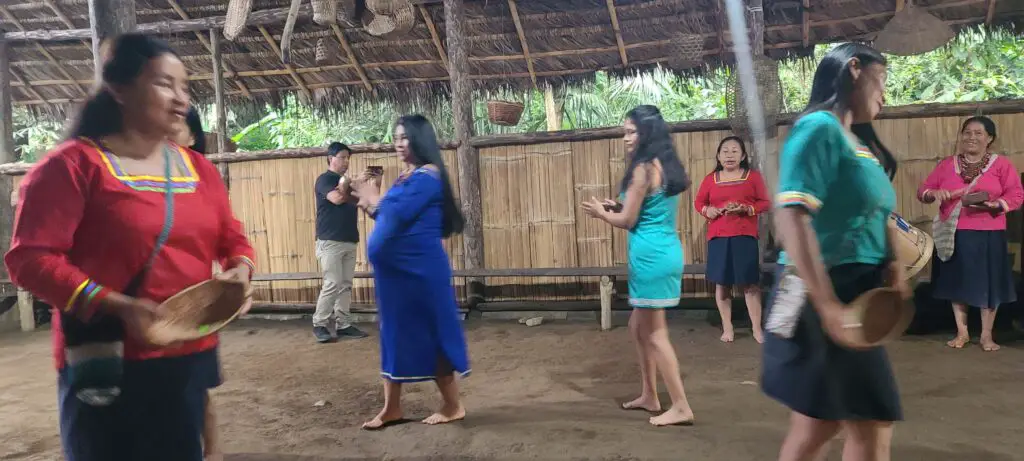 The way in which the Indigenous people of Ecuador are the fabric of the country’s story and also the present is sadly unfamiliar to Americans visiting. It was an honor to experience.
The way in which the Indigenous people of Ecuador are the fabric of the country’s story and also the present is sadly unfamiliar to Americans visiting. It was an honor to experience.
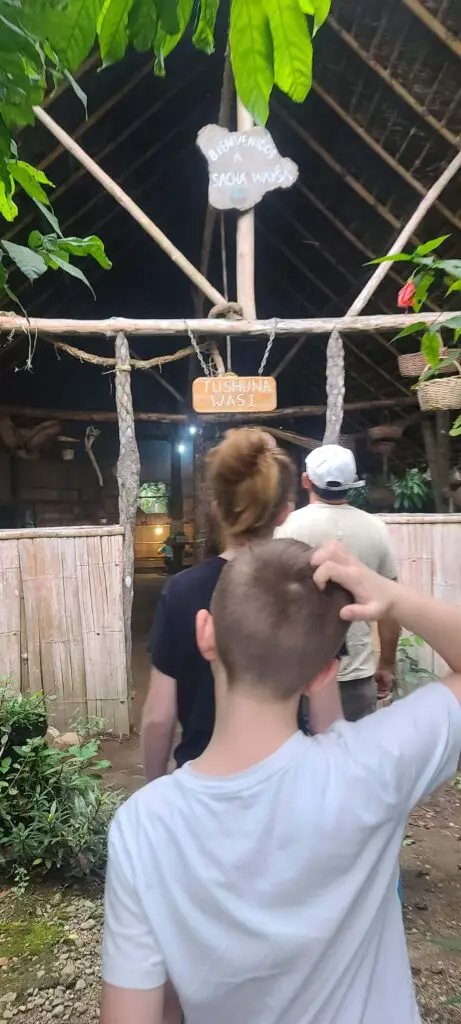 A tasty dinner and getting used to the sounds of the rainforest around our cabin completed our day. We were in for an adventure the next day with our white water rafting excursion on the Jatunyaku River.
A tasty dinner and getting used to the sounds of the rainforest around our cabin completed our day. We were in for an adventure the next day with our white water rafting excursion on the Jatunyaku River.
We started off our rafting day with a drive to meet our rafting guide. Traveling in March, knowing the water will be cold and deciding what to wear can be a challenge. The boys wore swim shorts with long-sleeve rash guards. The girls wore leggings and swim top/tank tops with rain jackets.
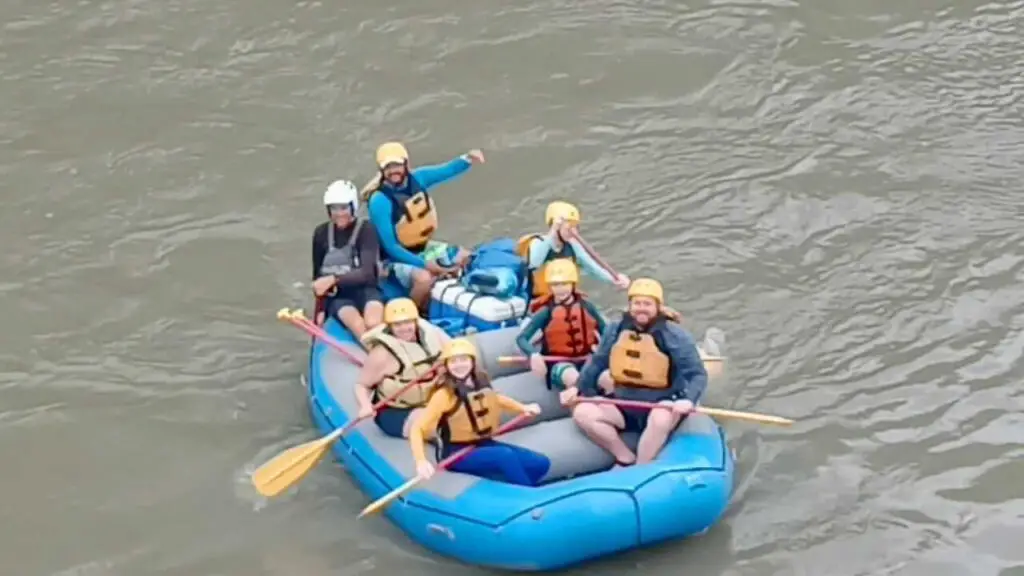 We made a stop to view the homemade goods of local Indigenous people.
We made a stop to view the homemade goods of local Indigenous people.
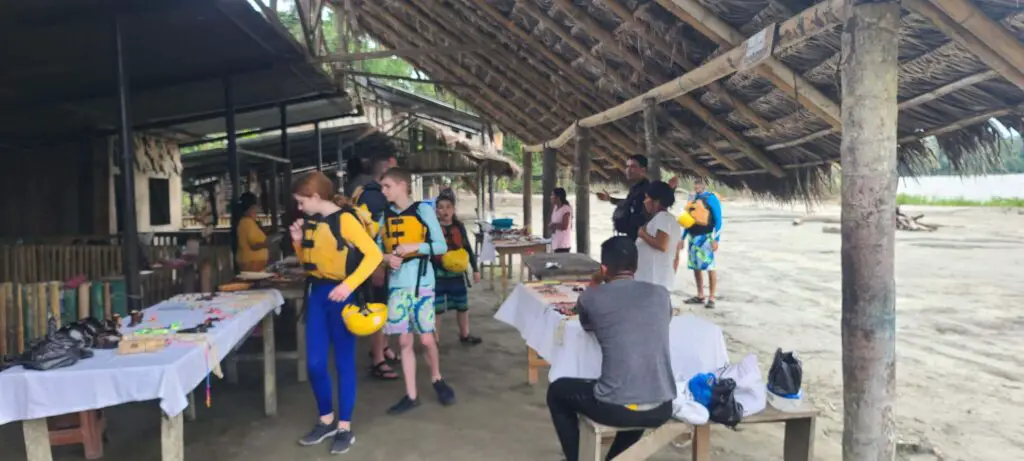 We stopped again for a lunch spread that was simply delicious.
We stopped again for a lunch spread that was simply delicious.
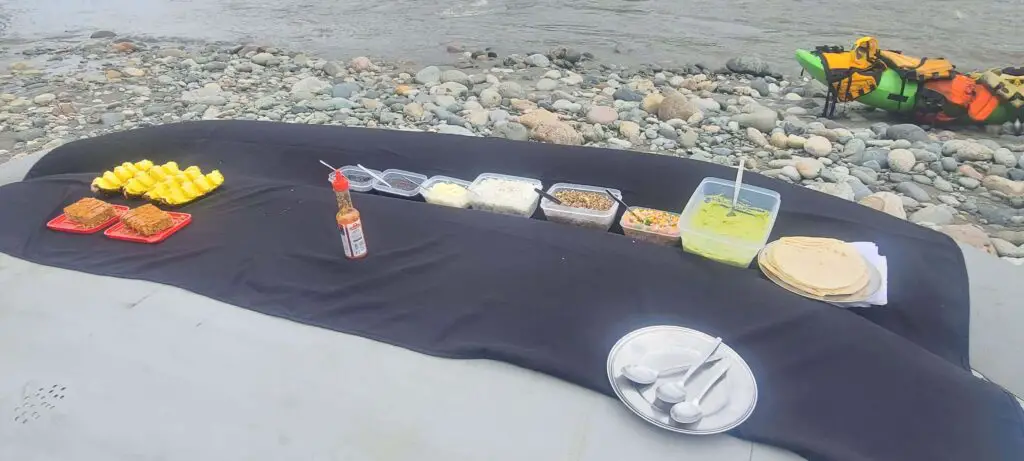 The kids enjoyed this chance to run around and explore a bit before pushing into our last leg of our trip.
The kids enjoyed this chance to run around and explore a bit before pushing into our last leg of our trip.
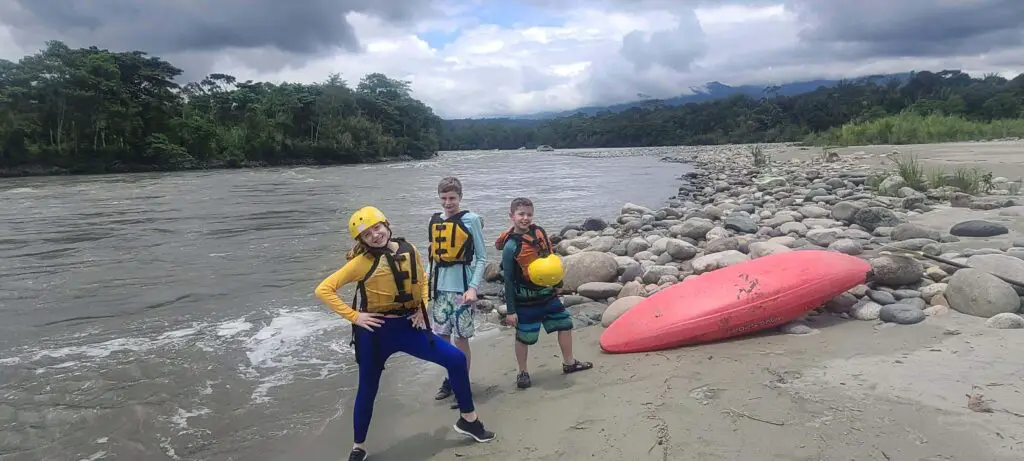 Rafting really seems to get our family working together in the adventure.
Rafting really seems to get our family working together in the adventure.
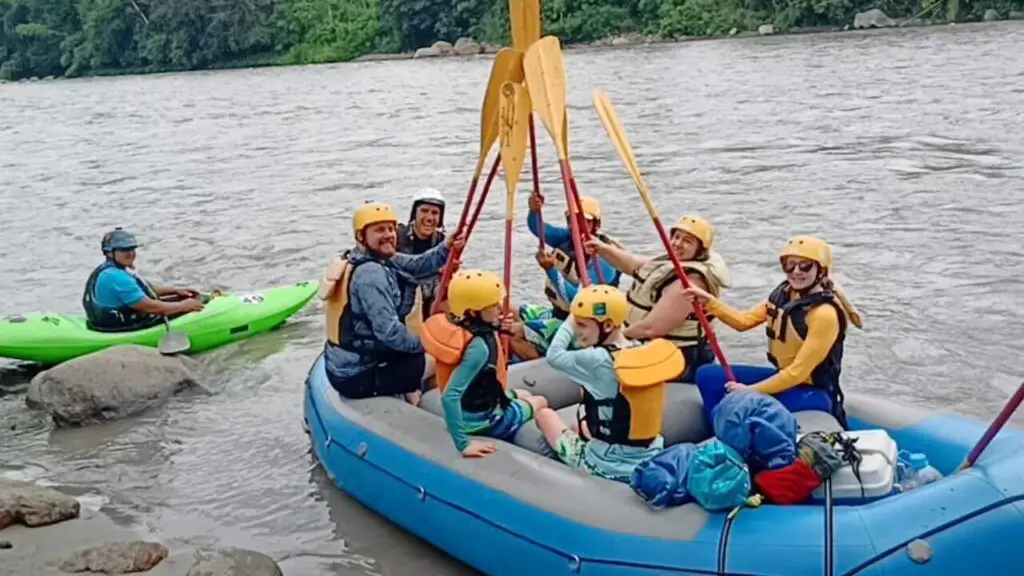 We were able to pull out our raft at Puerto Napo where they have public bath and changing areas. Yet another instance where our guide’s ability to communicate and handle paying for this service made our experience easy.
We were able to pull out our raft at Puerto Napo where they have public bath and changing areas. Yet another instance where our guide’s ability to communicate and handle paying for this service made our experience easy.
The kids wanted to warm up in the hot tub back at the resort before cleaning up for dinner.
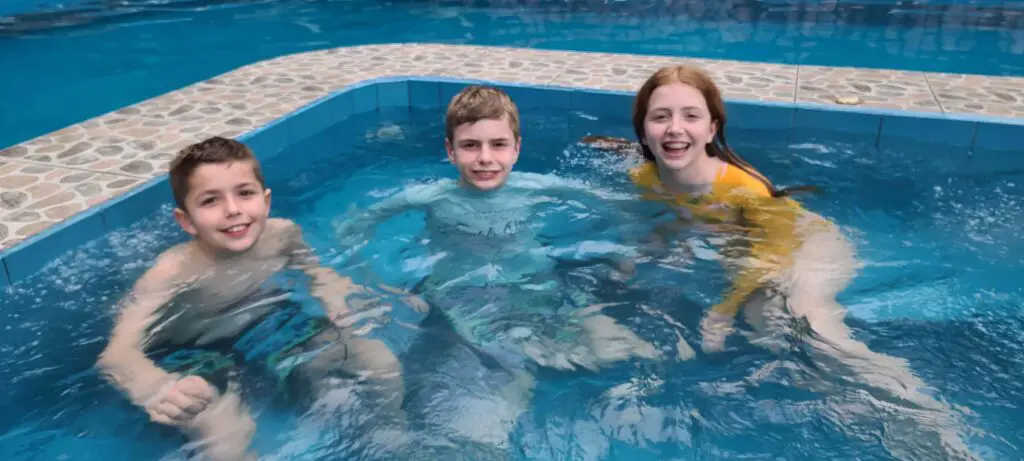 The evening’s entertainment included a chocolate tasting.
The evening’s entertainment included a chocolate tasting.
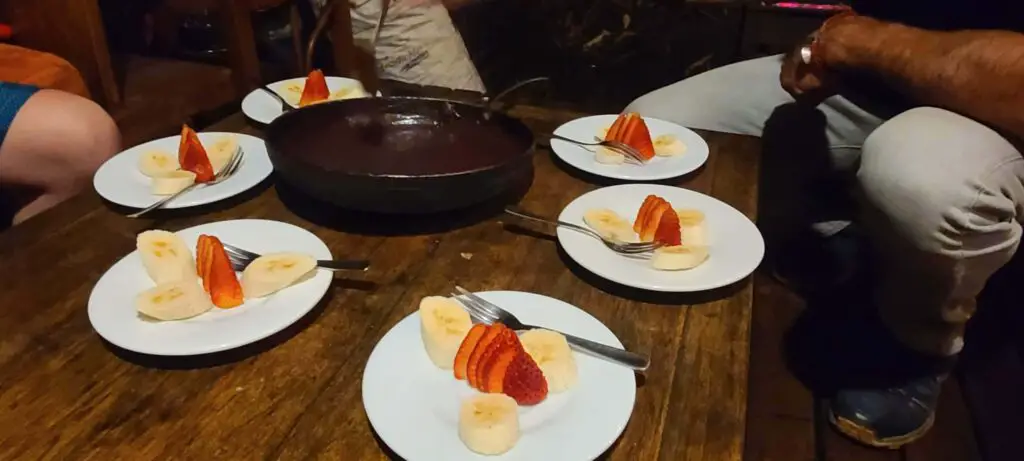 The surprise of the evening had some of us being braver than others tasting a type of grilled slug.
The surprise of the evening had some of us being braver than others tasting a type of grilled slug.
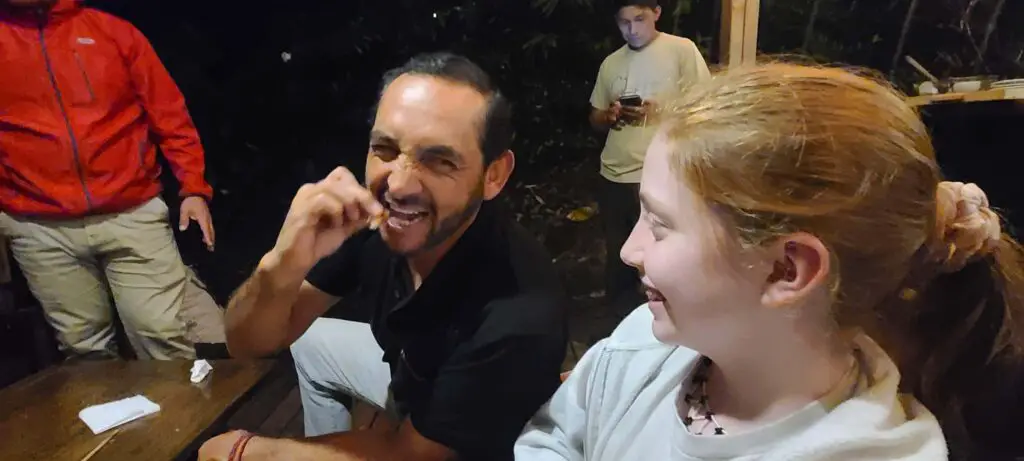 We ate a delicious dinner and even got to see a huge tarantula that was spotted by a staff member near the pool.
We ate a delicious dinner and even got to see a huge tarantula that was spotted by a staff member near the pool.
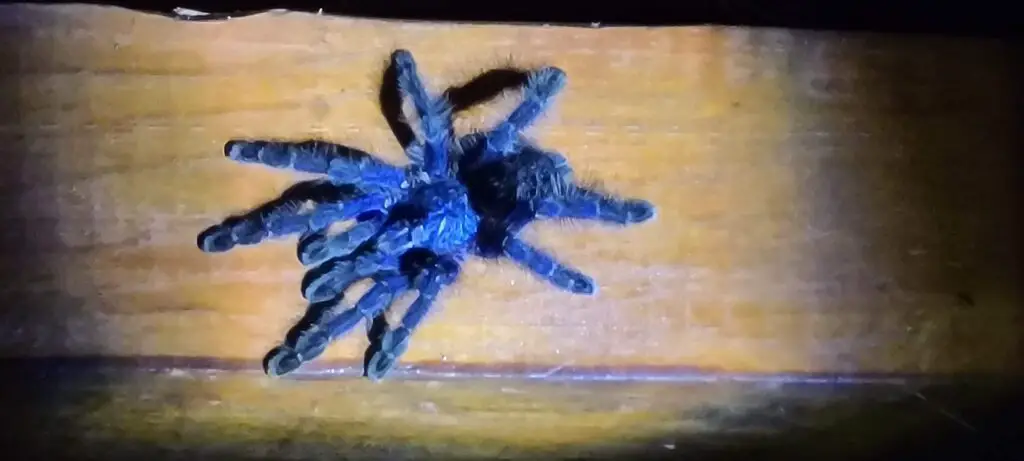 Our final full-day stay staying at Huasquila included a trip in a long boat to various stops.
Our final full-day stay staying at Huasquila included a trip in a long boat to various stops.
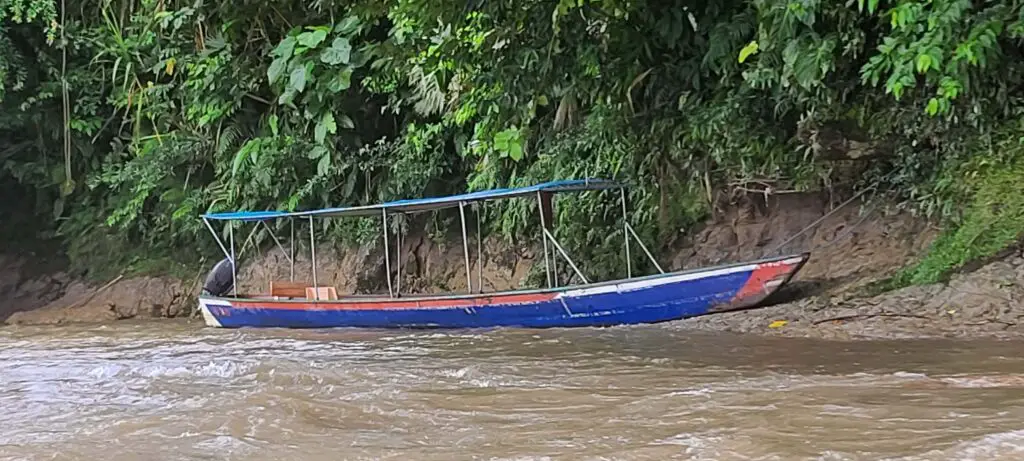 Our first stop was on private property (the contact of our guide) which allowed us some rainforest exploration. We stepped between raised surfaces above the mud. The kids were again loving the exploration.
Our first stop was on private property (the contact of our guide) which allowed us some rainforest exploration. We stepped between raised surfaces above the mud. The kids were again loving the exploration.
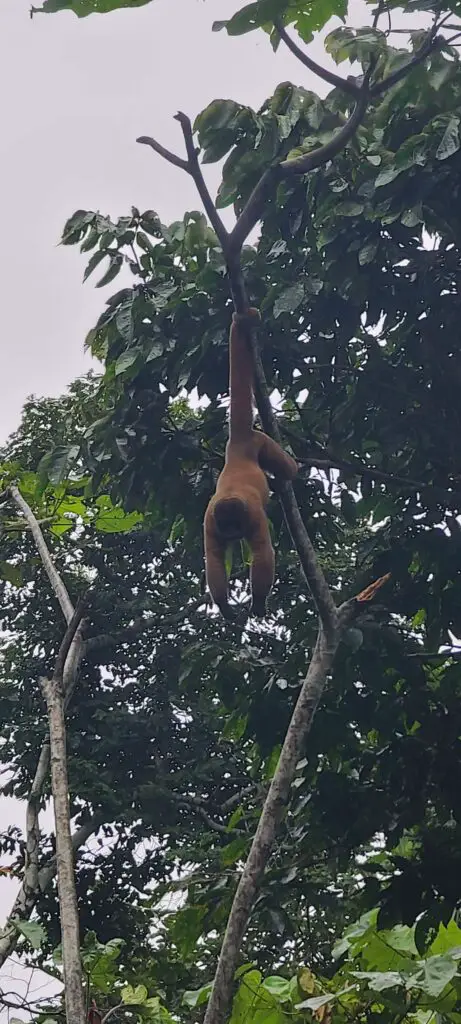 I may have slipped and learned the hard way not to grab at things in the rainforest with a splinter that stuck with me for a week and very muddy pants. We spotted a small monkey swinging around which made the journey even more fun.
I may have slipped and learned the hard way not to grab at things in the rainforest with a splinter that stuck with me for a week and very muddy pants. We spotted a small monkey swinging around which made the journey even more fun.
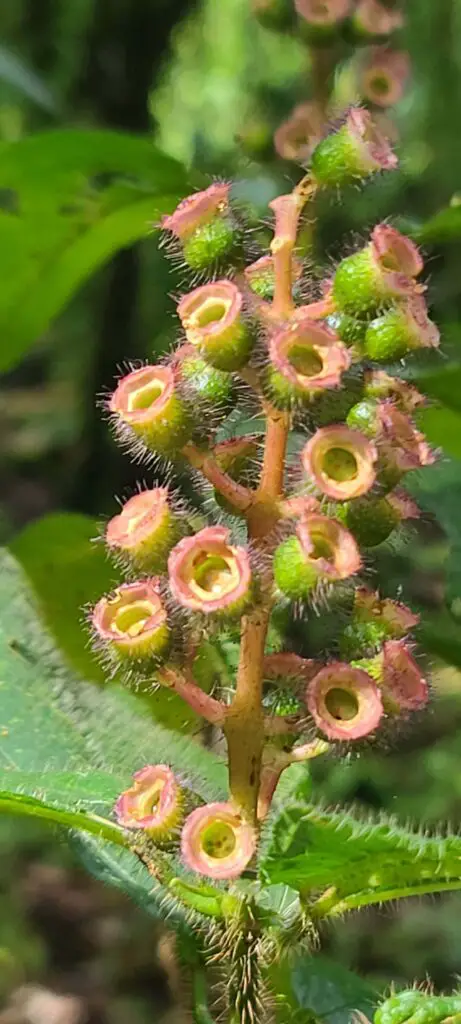 We visited the Amazonico Rescure Center next which is a zoo like environment set in a rainforest. They focus on rehabilitating animals for a variety of reasons.
We visited the Amazonico Rescure Center next which is a zoo like environment set in a rainforest. They focus on rehabilitating animals for a variety of reasons.
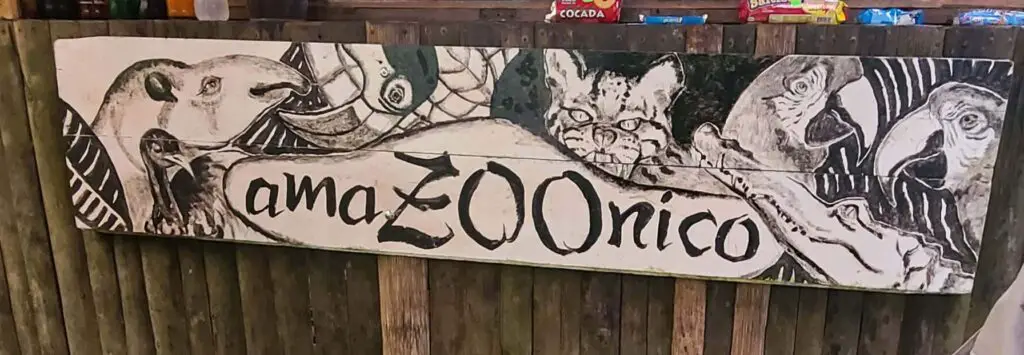 Another stop on private property led to a bit of blow dart practice.
Another stop on private property led to a bit of blow dart practice.
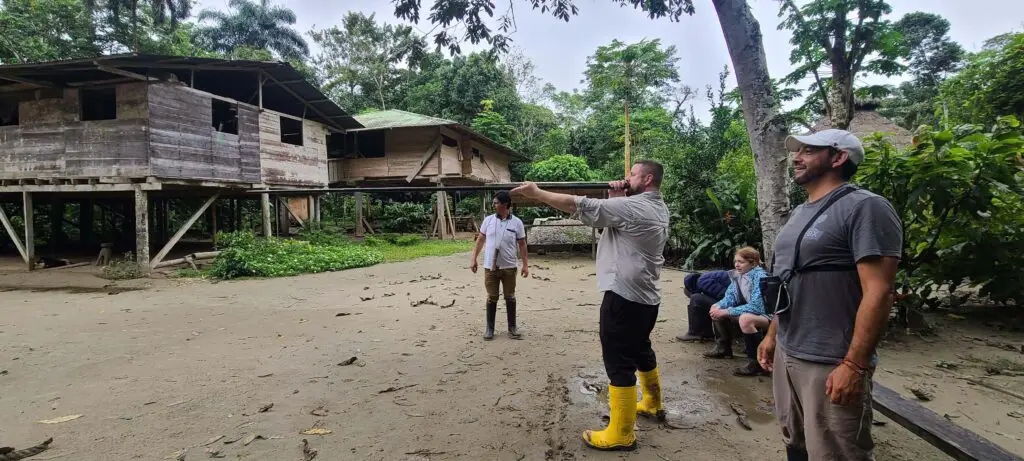 We visited a Cayman Reserve and fed the caimans from a dock.
We visited a Cayman Reserve and fed the caimans from a dock.
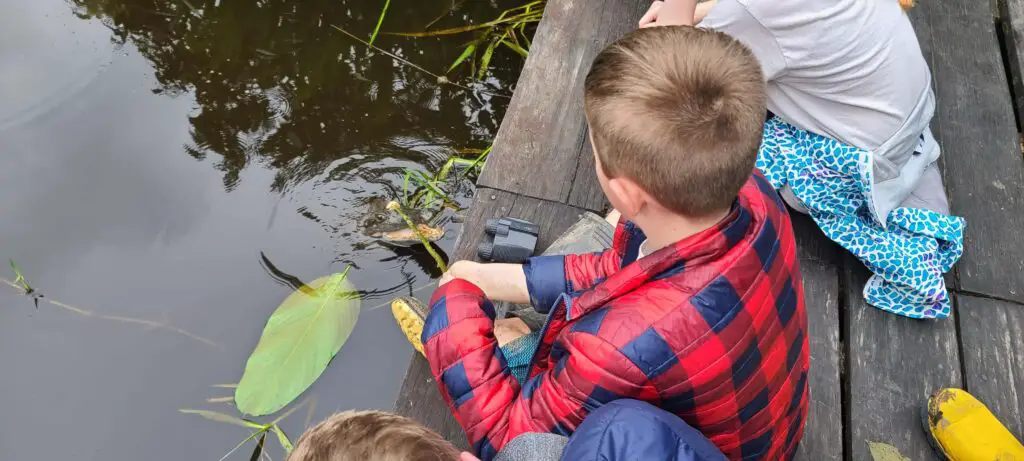 We finished this adventure with a delicious lunch at La Casa del Suizo, a resort located on the water and nestled within the Amazon. We swam and relaxed as the afternoon wound down.
We finished this adventure with a delicious lunch at La Casa del Suizo, a resort located on the water and nestled within the Amazon. We swam and relaxed as the afternoon wound down.
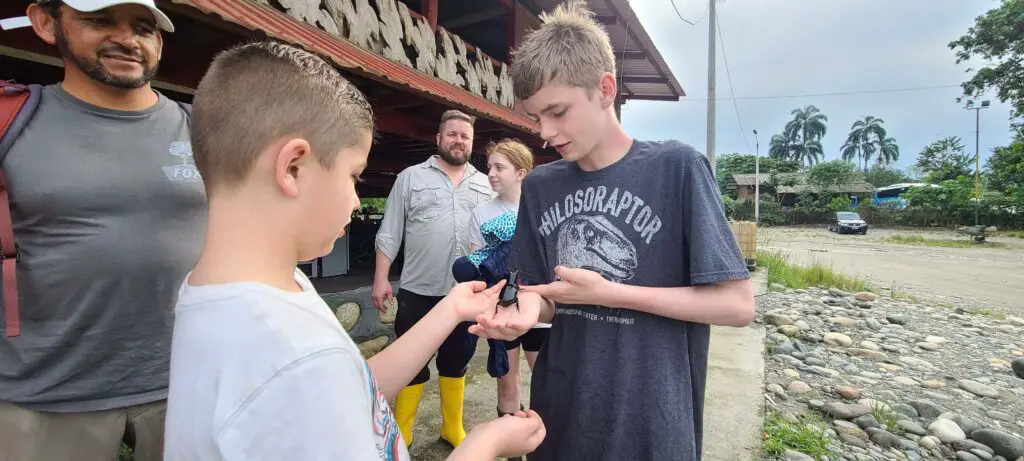 We returned by long boat to our vehicle and had one final surprise as the kids discovered a rhinoceros beetle near where we parked.
We returned by long boat to our vehicle and had one final surprise as the kids discovered a rhinoceros beetle near where we parked.
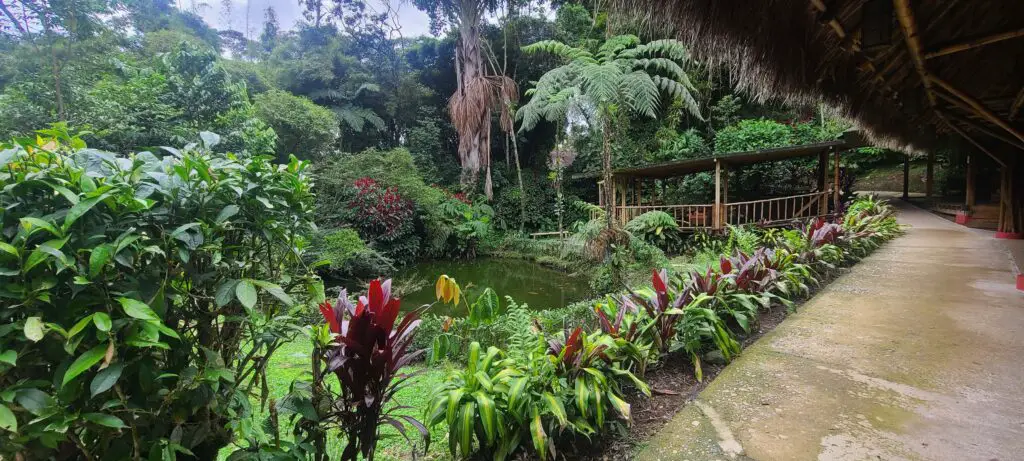 We enjoyed a final quiet night at Huasquila lodge and were very accommodated with a very North American spaghetti dinner with meat sauce, alfredo, and salad with ranch dressing. Although we love the Ecuadorian food, a little touch of home is sometimes comforting.
We enjoyed a final quiet night at Huasquila lodge and were very accommodated with a very North American spaghetti dinner with meat sauce, alfredo, and salad with ranch dressing. Although we love the Ecuadorian food, a little touch of home is sometimes comforting.
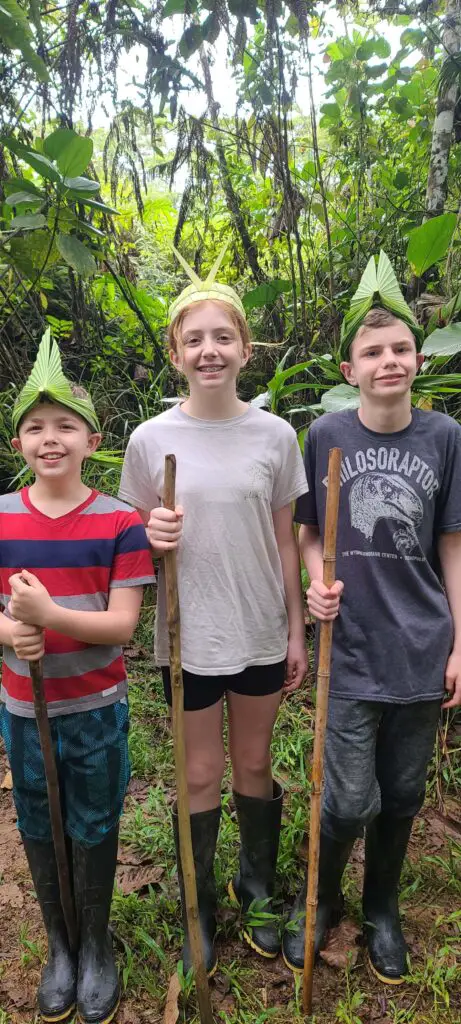 The Amazon had one last adventure for us on the final morning before departing. We went on a hike and knew to be up for anything. There were so many little creatures and wild things growing.
The Amazon had one last adventure for us on the final morning before departing. We went on a hike and knew to be up for anything. There were so many little creatures and wild things growing.
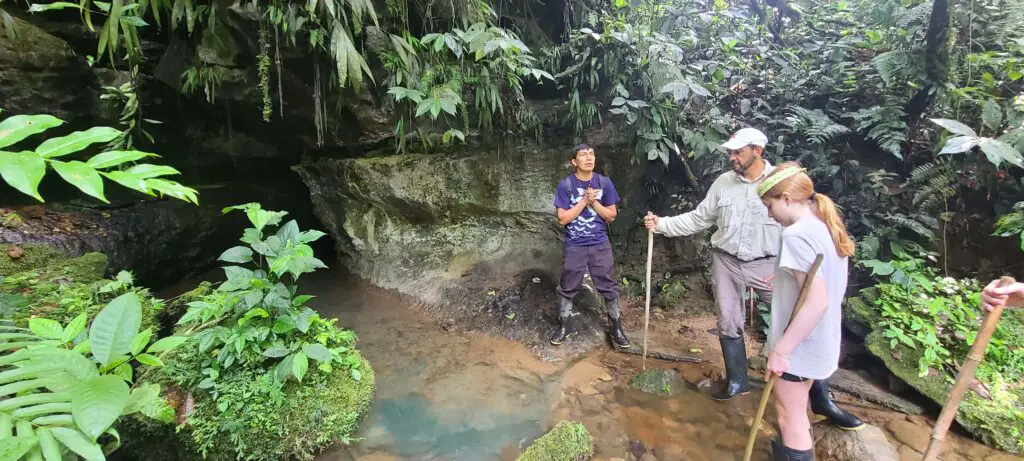 Although I have no photos due to the dark conditions, this is the moment before we entered a cave filled with water up to our knees. We used head lamps and walking sticks to navigate the rocky surface and tried to stay calm knowing that bats were inside and any startling would be more uncomfortable for us.
Although I have no photos due to the dark conditions, this is the moment before we entered a cave filled with water up to our knees. We used head lamps and walking sticks to navigate the rocky surface and tried to stay calm knowing that bats were inside and any startling would be more uncomfortable for us.
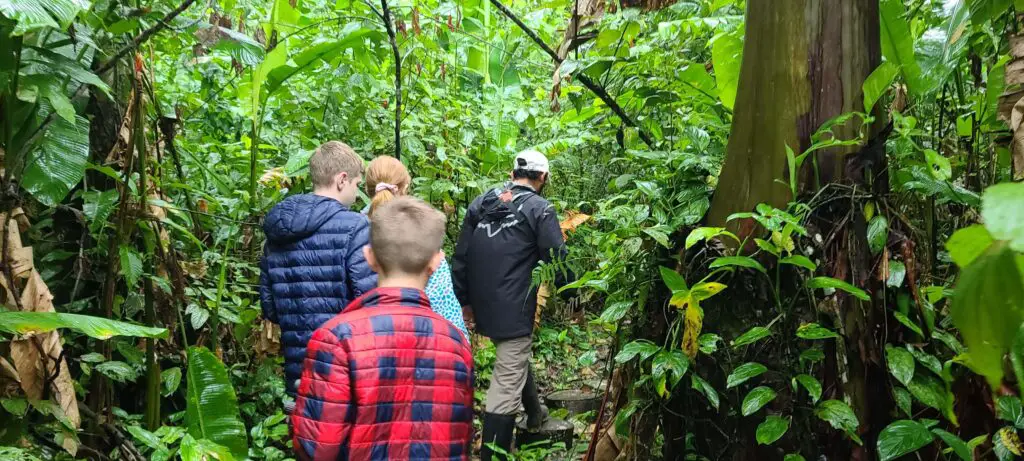
Baños
After cleaning up and packing, we sadly left behind Huasquila Lodge. On our way to Banos, we stopped in Tena for lunch. As I shared in my other “What to Know” post, we ran into our guides from the Quito museum and our rafting guide in downtown Tena. Small country, small world!
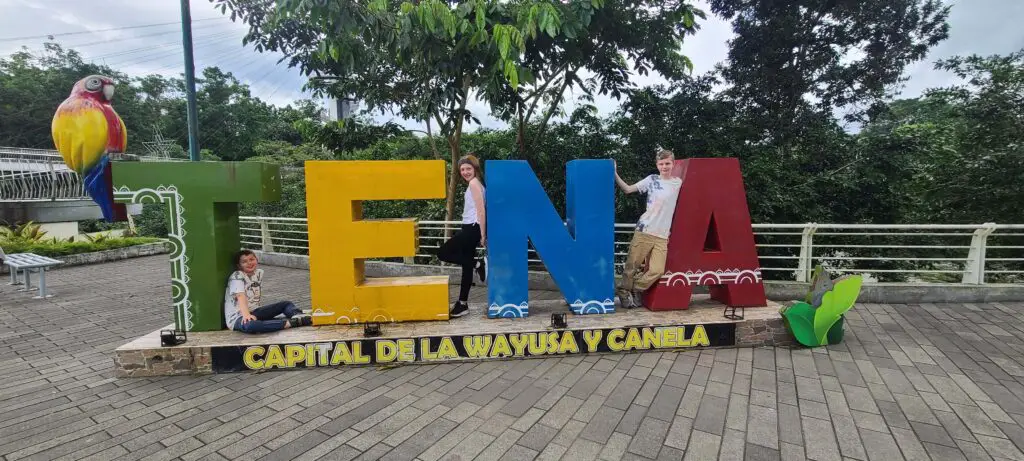 We also made a stop at Miramera, a fun spot to take adventurous photos and the perfect roadside stop.
We also made a stop at Miramera, a fun spot to take adventurous photos and the perfect roadside stop.
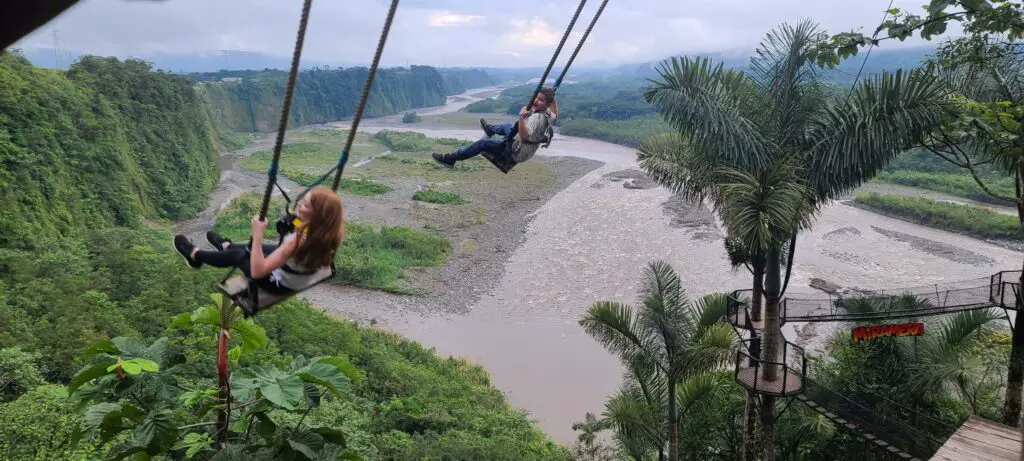 We chose to stay La Casa Verde- Eco House and we are so glad that we did. Not only did their family room work very well for us with its four beds, but a neighboring apartment space had not been rented so we were allowed to use the kitchen/dining/balcony of that space. After all of our family time, it was much appreciated to have a bit more space.
We chose to stay La Casa Verde- Eco House and we are so glad that we did. Not only did their family room work very well for us with its four beds, but a neighboring apartment space had not been rented so we were allowed to use the kitchen/dining/balcony of that space. After all of our family time, it was much appreciated to have a bit more space.
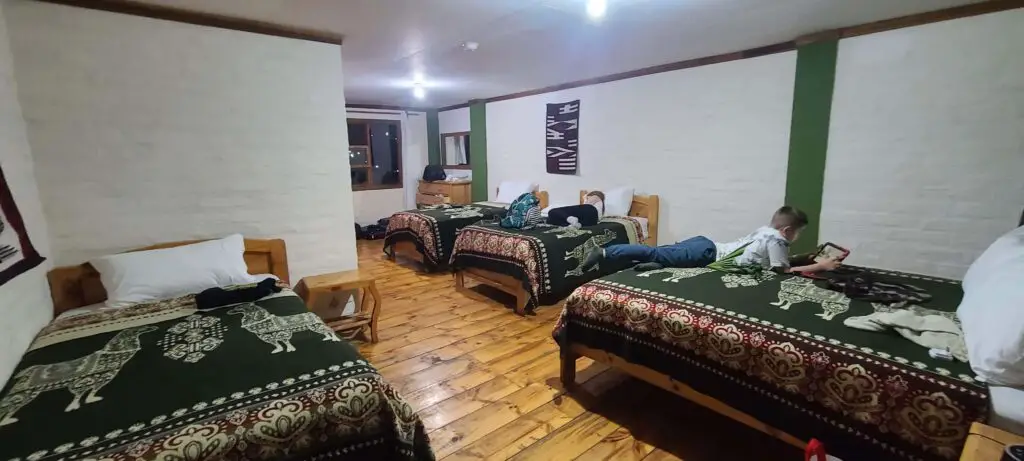 The breakfast was delicious. The laundry service was so convenient. Johan just simply meets every need of any guest as you will see from the 500+ average 5 star reviews. The property has an amazing view of the Rio Pastaza that runs through the valley in Baños.
The breakfast was delicious. The laundry service was so convenient. Johan just simply meets every need of any guest as you will see from the 500+ average 5 star reviews. The property has an amazing view of the Rio Pastaza that runs through the valley in Baños.
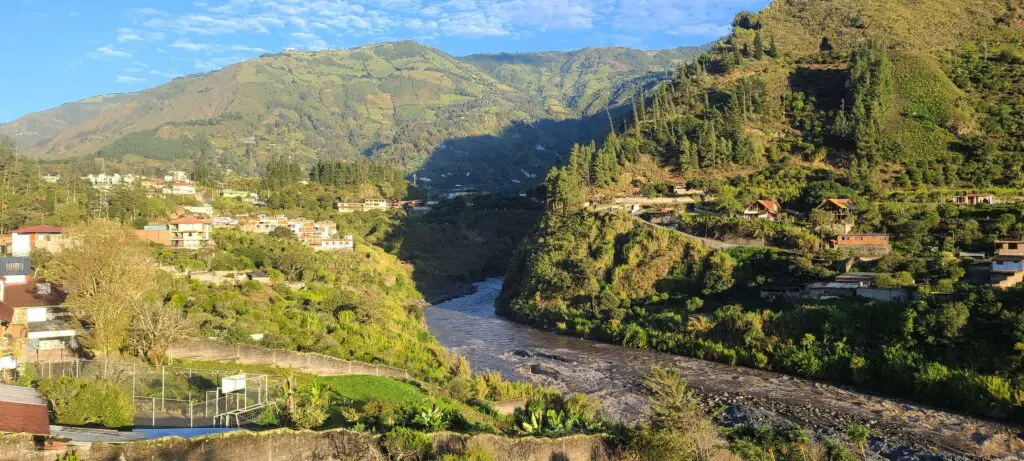 Our full day in Baños involved taking it easy! We traveled so high up into the hills for more fun photo opps.
Our full day in Baños involved taking it easy! We traveled so high up into the hills for more fun photo opps.
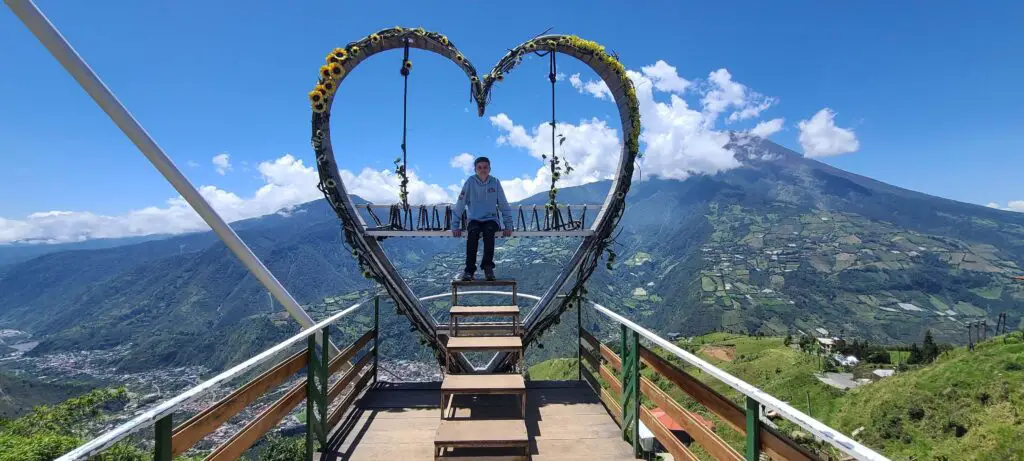 You can purchase entry into a park around the famous waterfall, El Pailon de Diablo. There is a hike that many do to experience the waterfall up close. We chose the alternate route to get a great view from a giant suspension bridge.
You can purchase entry into a park around the famous waterfall, El Pailon de Diablo. There is a hike that many do to experience the waterfall up close. We chose the alternate route to get a great view from a giant suspension bridge.
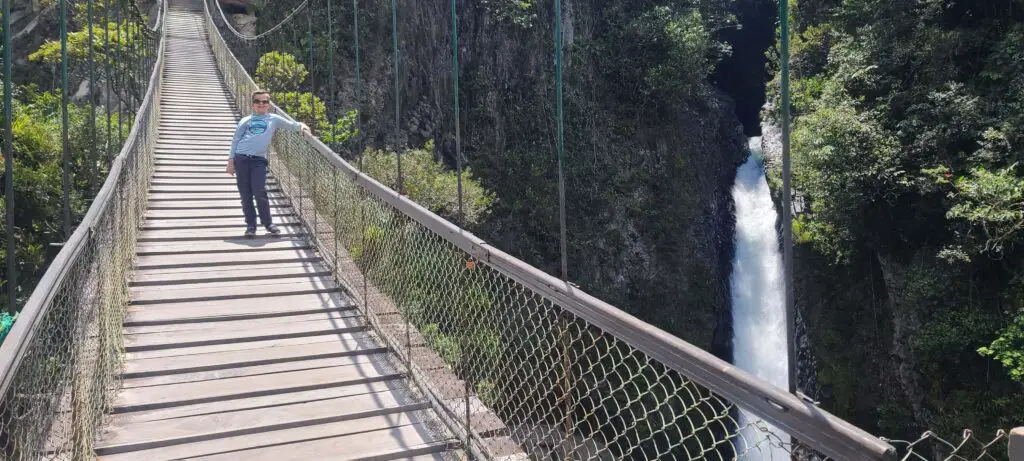 We ate lunch in downtown Baños. We shopped and we people watched. It was relaxing and easy following our preceding adventures. We took advantage of the comfortable accommodations to get ready to leave the next morning.
We ate lunch in downtown Baños. We shopped and we people watched. It was relaxing and easy following our preceding adventures. We took advantage of the comfortable accommodations to get ready to leave the next morning.
Volcanoes, Crates & Villages
By the morning of our last full day, the urgency to take it whatever was left to enjoy of our time in Ecuador had set in. We headed out toward Quilota, a massive crater lake located at the Western most part of the Ecuadorian Andes Mountains.
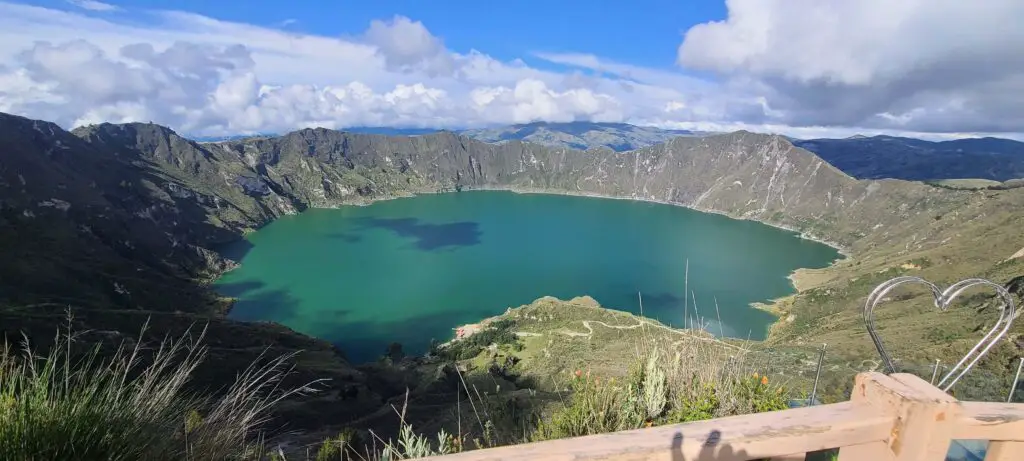 It was very sunny and most of our photo attempts were pretty ridiculous. We enjoyed a lunch up on the mountain before heading back out toward that evening’s accommodations, Mama Hilda’s Hostal.
It was very sunny and most of our photo attempts were pretty ridiculous. We enjoyed a lunch up on the mountain before heading back out toward that evening’s accommodations, Mama Hilda’s Hostal.
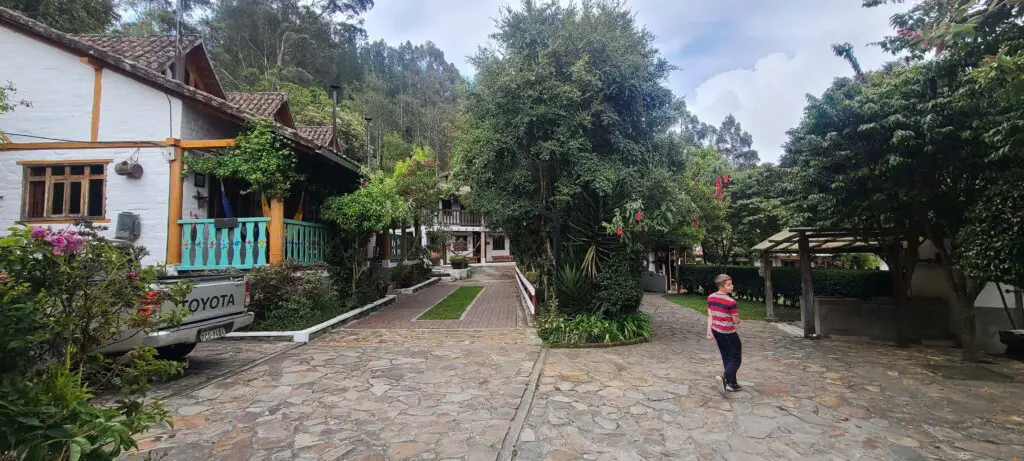 As we drove into the tiny village of Chucchilán, it was apparent that many visitors along this highway do not stop for the night. They are missing out though on the gorgeous accommodations available at Mama Hilda’s were impressive.
As we drove into the tiny village of Chucchilán, it was apparent that many visitors along this highway do not stop for the night. They are missing out though on the gorgeous accommodations available at Mama Hilda’s were impressive.
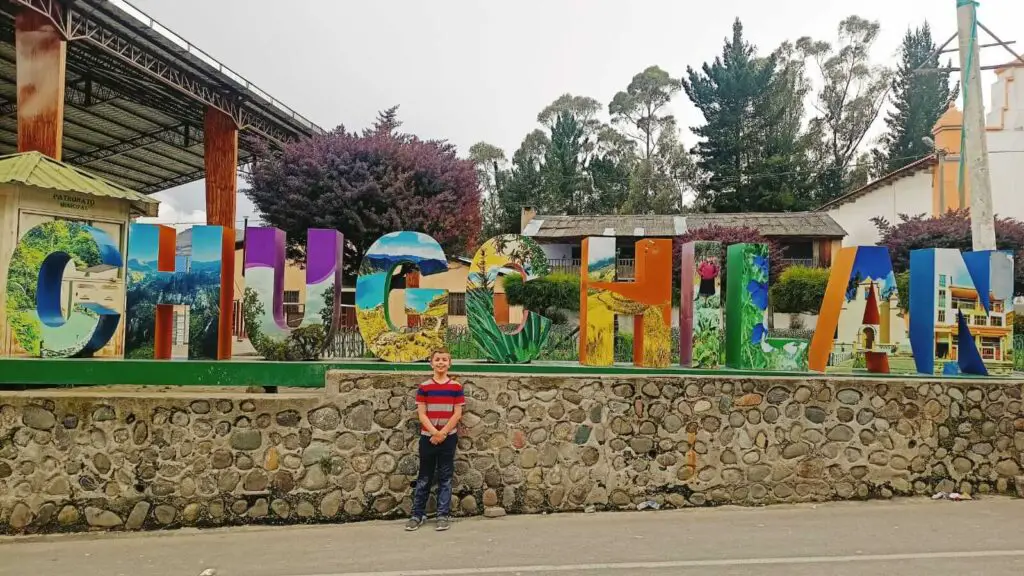 We wandered into town to watch locals playing a form of volleyball (Ecuavoley, Ecuador’s national sport) with its unique set of rules.
We wandered into town to watch locals playing a form of volleyball (Ecuavoley, Ecuador’s national sport) with its unique set of rules.
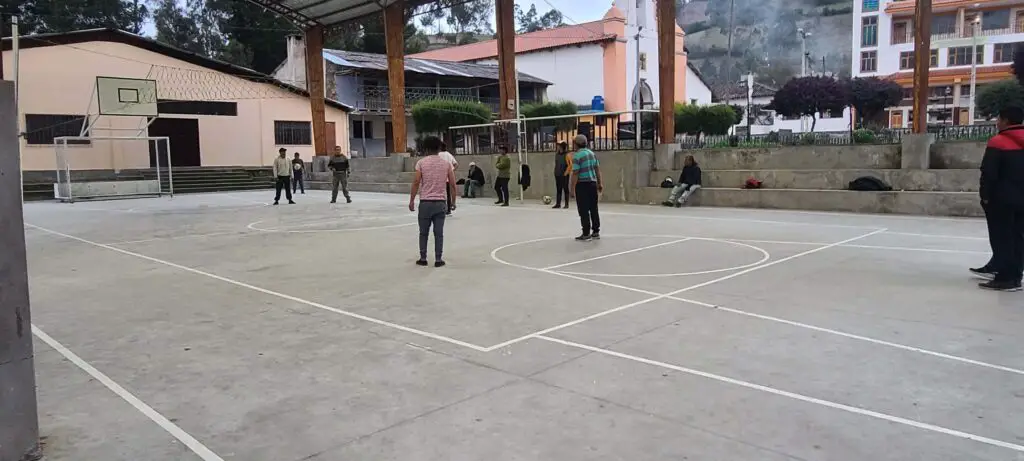 The hospitality was very warm and the food was delicious.
The hospitality was very warm and the food was delicious.
The mist rising over the hills at Mama Hilda’s was breathtaking the next morning.
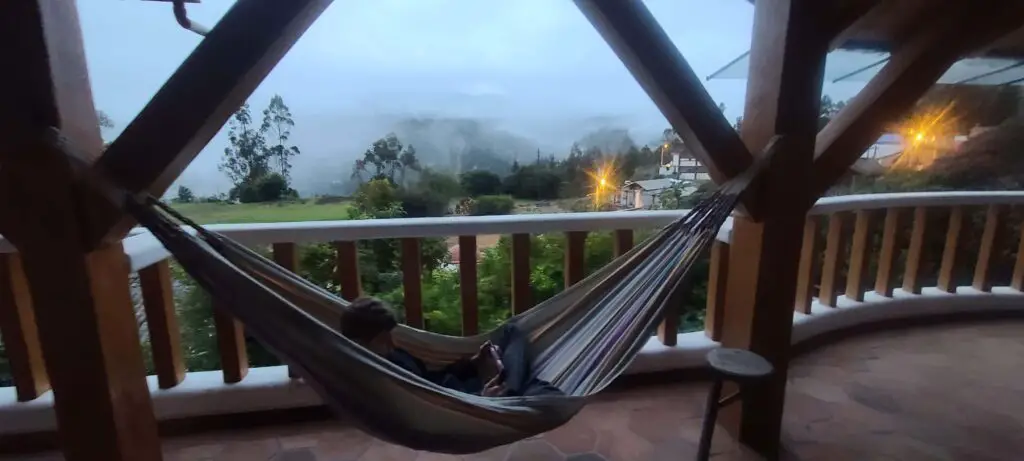 We encountered some very winding roads with wash outs that made us very grateful for our driver, Oscar’s expertise. We made our way to Cotopaxi, an active volcano located in the Andes Mountains. We were able to walk a boardwalk around a lake found at its base. Ironically an earthquake hit Ecuador during this time, but we were unable to feel it as we were on absorbant ground under the boardwalk.
We encountered some very winding roads with wash outs that made us very grateful for our driver, Oscar’s expertise. We made our way to Cotopaxi, an active volcano located in the Andes Mountains. We were able to walk a boardwalk around a lake found at its base. Ironically an earthquake hit Ecuador during this time, but we were unable to feel it as we were on absorbant ground under the boardwalk.
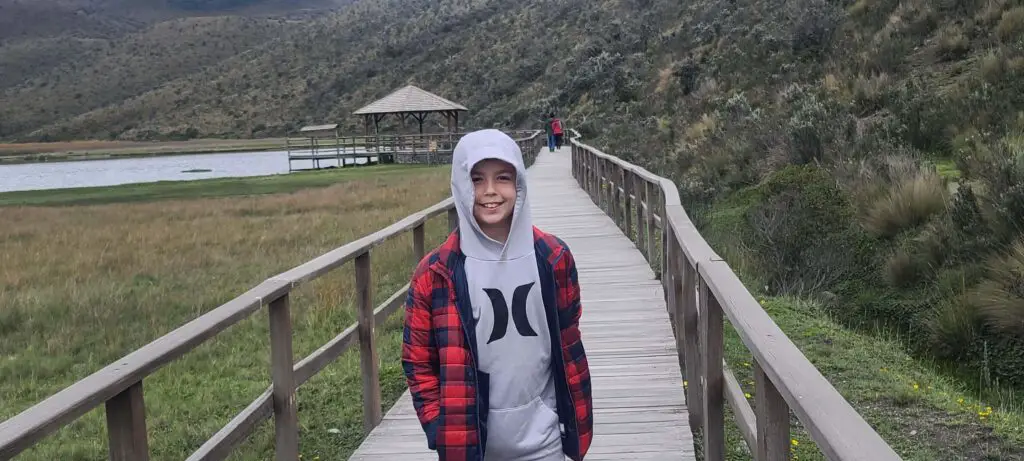 We toured the visitor center to get a little background.
We toured the visitor center to get a little background.
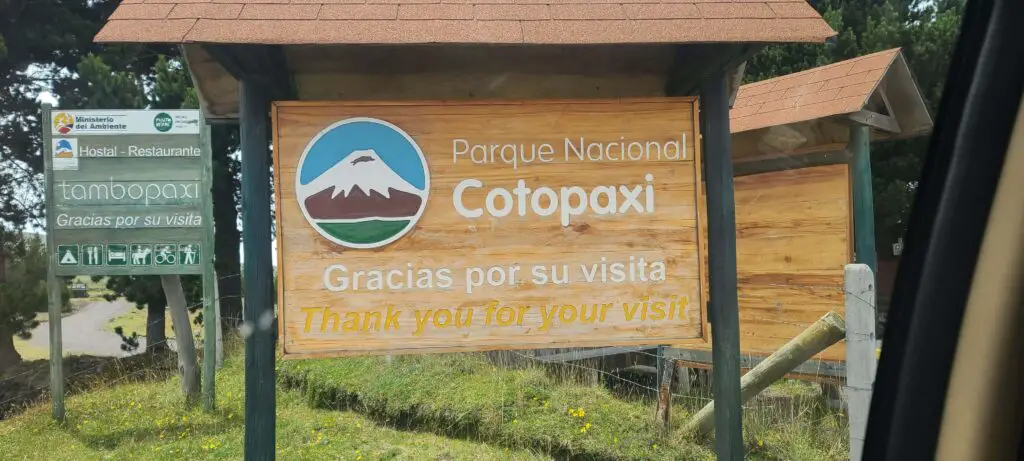 We ate lunch at Tombopaxi, a lodge found near the volcano. This was our stop before heading to the airport. We had so much to process as we had seen what seemed like it all. We were assured there is much more to see when we return to Ecuador and we certainly hope to have that chance!
We ate lunch at Tombopaxi, a lodge found near the volcano. This was our stop before heading to the airport. We had so much to process as we had seen what seemed like it all. We were assured there is much more to see when we return to Ecuador and we certainly hope to have that chance!
Why Hire a Guide and/or Driver
On the road to Northern Ecuador, we needed a new tire. We pulled over to the side of the road and got it repaired in less than twenty minutes. This would not have been something we could have as easily navigated.
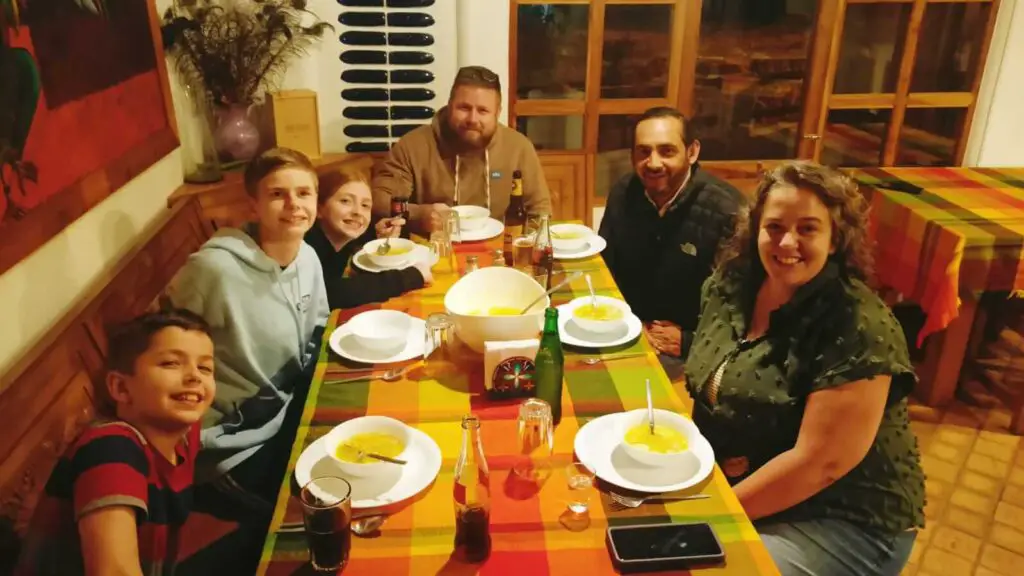 At the Condor Park, our guide knew the main handler of most of the birds which provided a personalized experience beyond just walking around the park.
At the Condor Park, our guide knew the main handler of most of the birds which provided a personalized experience beyond just walking around the park.
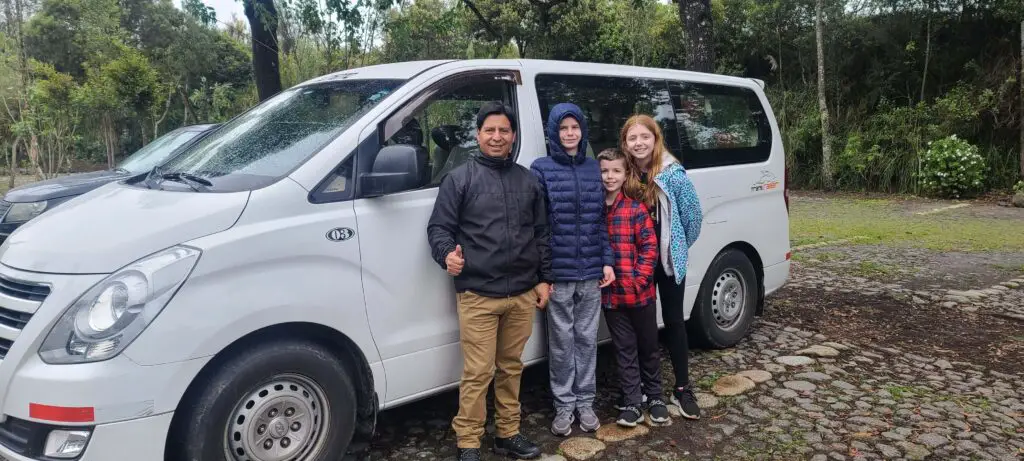 The right guide will give you space to do certain things on your own, like browsing the market or going out for a meal, when they know you are safe and comfortable.
The right guide will give you space to do certain things on your own, like browsing the market or going out for a meal, when they know you are safe and comfortable.
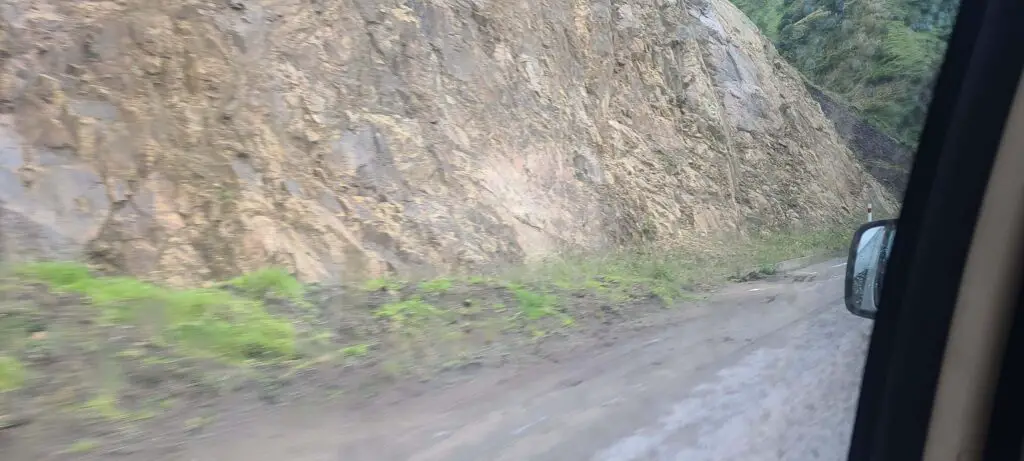 The roads outside of large cities – let me reiterate – are washed out, full of holes in some places. Navigating the driving and potential car repairs was just not worth it to us to take the risk.
The roads outside of large cities – let me reiterate – are washed out, full of holes in some places. Navigating the driving and potential car repairs was just not worth it to us to take the risk.
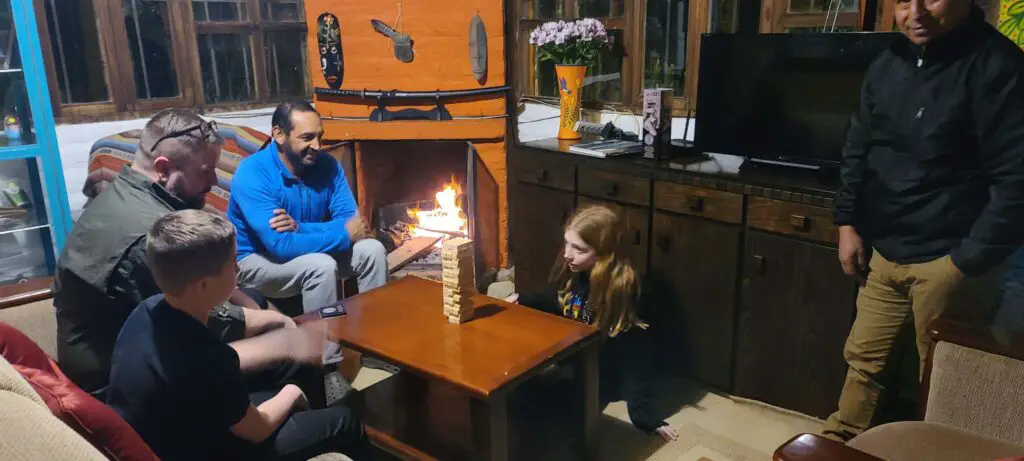 I could give you many, many reasons why our trip was enhanced by the driver and guide, but these are clear examples of our trip was richer for their expertise.
I could give you many, many reasons why our trip was enhanced by the driver and guide, but these are clear examples of our trip was richer for their expertise.

